Add your feed to SetSticker.com! Promote your sites and attract more customers. It costs only 100 EUROS per YEAR.
Pleasant surprises on every page! Discover new articles, displayed randomly throughout the site. Interesting content, always a click away
NextDay Inspect
Residential and Commercial ServicesInformational Videos 4 Feb 2025, 4:45 pm
Inspection Videos

Welcome to our Videos page, where expert insights meet convenience!
Here, you’ll discover a curated collection of video resources designed to guide you through a variety of different processes with clarity and precision. Whether you’re a buyer, seller, or real estate professional, our engaging videos offer actionable tips, in-depth coverage, and step-by-step advice tailored to your needs. Dive in and let NextDay Inspect simplify your journey toward informed decisions and peace of mind.
Property Inspection Videos
Commercial Inspections Videos
Environmental Testing Videos
Additional Videos
Certified Master Inspector Videos
Warranties
Other
A Comprehensive Guide to Property Condition Assessments: What You Need to Know 16 Mar 2023, 9:06 pm
What is a Property Condition Assessment?
Property Condition Assessments (PCAs) are an important yet often overlooked element of real estate transactions. This comprehensive guide provides the information and resources you need to understand what a Property Condition Assessment entails, how it compares with other assessments, and when such an assessment is required in order to ensure adverse conditions don’t surprise buyers or sellers during a transaction. Whether you’re a buyer hoping for better insight into purchasing property or a seller looking for ways to maximize your investments, this guide will provide the essential information you need to know about PCAs.

A Property Condition Assessment (PCA) is an important evaluation used during real estate transactions. It provides insight into the overall condition of a property and helps both buyers and sellers understand what they are buying or selling. A PCA evaluates the physical aspects of a property, including any structural components such as walls, floors, ceilings and insulation; operational systems like plumbing, mechanical and electrical services; interior finishings; exterior features like landscaping and more. The assessment also covers safety items such as fire protection systems that must adhere to national codes. Not to be confused with other assessments such as home inspections or appraisals which focus primarily on price value, a PCA looks at how well the property has been maintained over time so that potential buyers can make informed decisions when deciding whether or not to purchase a certain piece of real estate. PCAs are often required by mortgage lenders before approving a loan for residential properties. Therefore, it is beneficial for both parties in terms of pricing negotiations but also risk management should any adverse conditions suddenly appear after closure on the property has occurred.
When is a Property Condition Assessment Required?
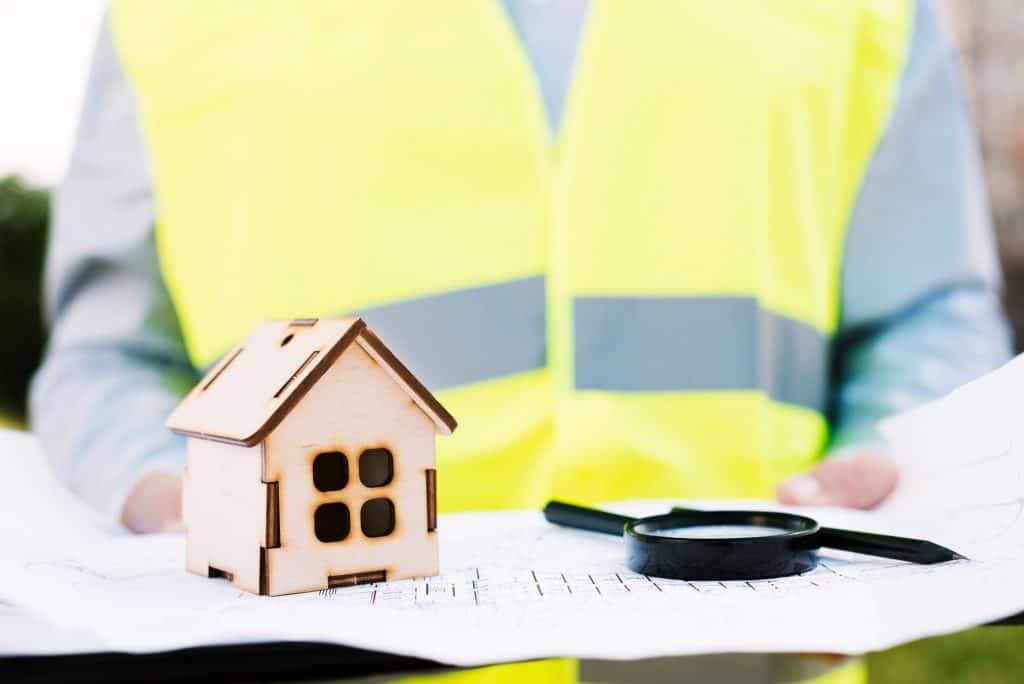
Property Condition Assessments (PCAs) are an important part of real estate transactions and provide buyers with detailed insight into the condition of a property before purchasing and sellers assurance that no surprises will come up during a transaction. PCAs are conducted by experienced professionals who investigate key aspects of the home, such as physical components, to identify any issues or potential trouble spots. Reports from these assessments can be used by both buyers and sellers to discuss potential problems not easily identifiable during normal inspections, such as safety factors contributing to upgrades needed within existing materials or systems.
Besides identifying any problems or developing areas, PCAs also work in favor of the buyer in validating that conditions they have seen while touring prior match what is ultimately found within the assessment report. Such reports help eliminate uncertainty that prospective purchasers may experience when undergoing due diligence prior finishing out their agreement with a seller on terms. Sellers can use PCA results to outline necessary improvements costs if any exist so they know what needs addressed prior listing their investment publicly for sale without surprise hidden costs appearing down the line which could affect offers from respective bidders coming through negotiations.
Different Types of Property Assessments

Property Condition Assessments (PCAs) are an important part of many real estate transactions. There are several different types of assessments that can be conducted on a property, and it is important to understand the differences between them in order to maximize the value generated by each assessment. The most common type of Property Condition Assessment is a physical inspection of the premises in order to look for any existing damage or deficiencies that may have gone unnoticed during preliminary inspections. This type allows entities such as lenders, buyers and tenants, who may not always have access to certain areas or technical knowledge about building systems, to gain insight into present issues without having specialized expertise onsite.
In addition to PCAs there are other types of assessments which also provide useful information but do so more efficiently than a traditional physical inspection. Environmental Site Assessments (ESAs) assess potential risks stemming from soil contamination, hazardous chemicals or nearby sources referenced by government agencies such as US EPA’s Superfund program while Building Energy Analysis Inspections investigate current energy efficiency levels and ways that improvements can be made.
Rounding out these assessments is Instrumentation-Based Testing which looks specifically at building components such as HVAC units, electrical systems and appliances ensuring safety standards set forth by authorities like OSHA has been met.
All three main categories provide critical data when making informed decisions regarding major investments like commercial property purchases; making sure no undesirable surprises arise after closing deals or contracts have been signed.
Benefits of a Property Condition Assessment

Property Condition Assessments (PCAs) are vital for any real estate transaction, providing the buyer and seller valuable information about the condition of a property. A comprehensive PCA entails an in-depth assessment conducted by experienced inspectors working through detailed checklists to detect current or potential problems that could affect a building’s physical performance. This helps buyers make informed decisions prior to purchase as well as identify appropriate levels of maintenance necessary during ownership while also preventing costly surprises down the road.
Additionally, sellers can benefit from a PCA before listing their properties by identifying potential disclosure issues, enabling them to address and remedy any defects that may slow or impact the sale if left unresolved. This can save time and money in addition to avoiding any legal disagreements between buyer and seller over repair demands longer after closing day. Lastly, lenders also use Property Condition Assessments as part of their due diligence process to provide lenders with assurance regarding collateral quality when considering loans against properties new construction projects and portfolios alike.
The Property Condition Assessment Process
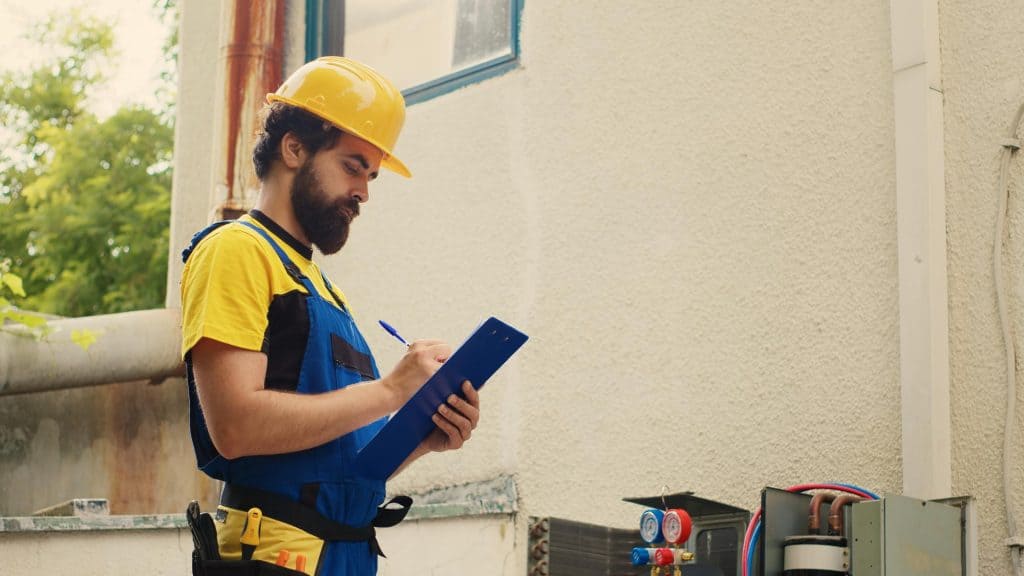
Property Condition Assessments (PCAs), also known as Property Condition Reports, are crucial for both buyers and sellers when buying or leasing real estate. The process involves an inspection of the condition of a property to determine any existing defects or possible repairs that may be needed in its current state. An impartial contractor or firm hired by the buyer usually conducts these assessments before making an offer on a property, so they can identify issues concerning safety and value ahead of time.
In order to ensure no surprises arise during the real estate transaction, all parties involved – buyers, sellers, lenders, etc – should get a PCA carried out which will provide valuable information regarding deficiencies as well as beneficial information such as energy costs; estimated repair/replacement costs; fire hazards; and compliance with building codes and other regulations governing their use.
Some states require that financing agencies produce their own full-scale assessment report prior to closing on a home loan–owing more details about necessary repairs than those done via generic PCA services–so it is important to inquire whether this is needed before getting started with the purchasing process. All in all, Property Condition Assessments are invaluable steps towards investments made successfully so taking advantage of them should always be recommended!
Summary: The Importance of PCAs
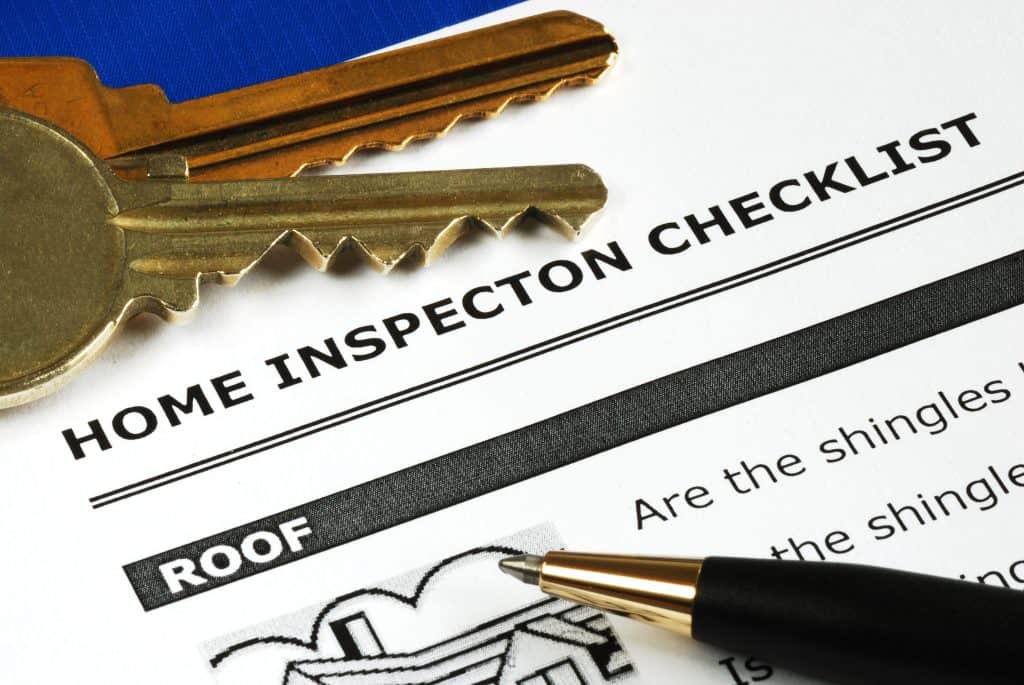
Ensure peace of mind with a Property Condition Assessment (PCA). PCAs reveal property conditions, potential issues, and needed repairs. Buyers gain insights, while sellers address problems proactively. Next Day Inspect’s detailed reports cover structural, mechanical, and safety aspects, ensuring informed decisions. Avoid surprises; secure your investment today!
When Should You Test for Mold in Your Home? 12 Jan 2023, 1:55 am
When Should You Test for Mold in Your Home?
When it comes to signs of water damage, there are so many that it can be easy to overlook. That’s why it’s important to take the time to identify potential issues once they arise. After all, a property that is plagued by water damage will be unable to sustain itself in the long run. If you detect the first signs of water damage at an early stage, you can work towards rectifying the issue before it becomes too serious.
Thankfully, detecting the first signs of mold is easier than you might think. Once you start noticing a few telltale signs, it’ll be much easier to spot mold creeping into your home and evicting unsuspecting residents. This guide will help you keep track of any potential issues as they arise and help safeguard your family against future problems.

When to Test for Mold in a Home
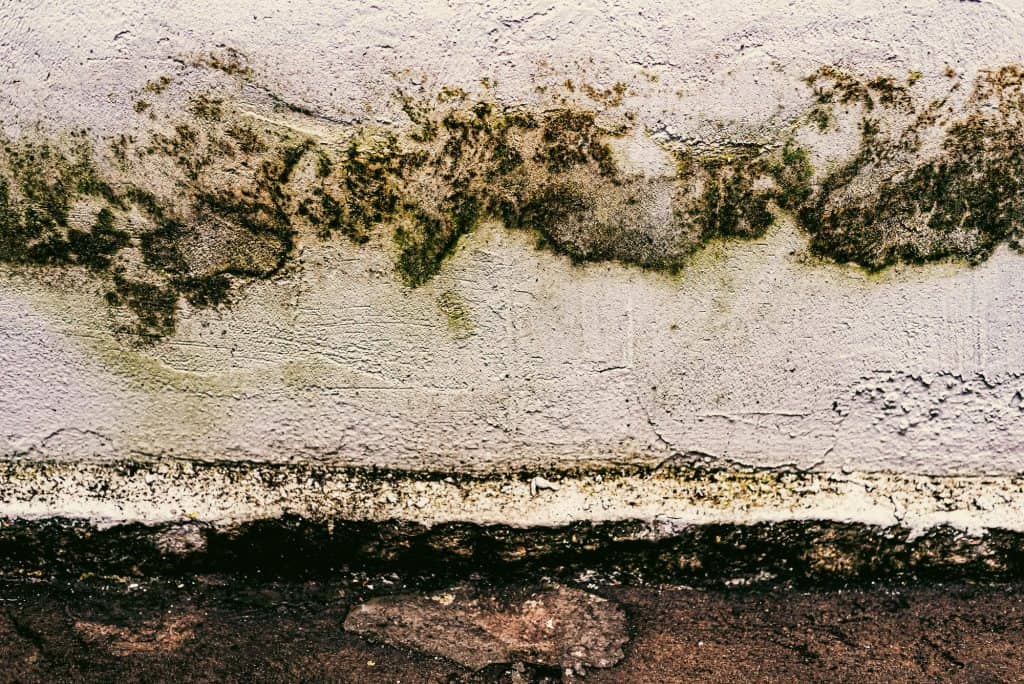
Well, it depends on the first signs of water damage. If there is a noticeable leak or if you are noticing some damp areas on your floor, start testing for mold as soon as possible. In fact, the longer you wait to test for mold, the more likely it is that mold will grow and spread into other areas of your home. The best time to test for mold is when you notice any of these symptoms:
– Sudden change in temperature
– Sudden change in humidity
– Musty odor
– Unusual stains on walls and ceilings
– Clogged sinks or toilets
If you notice these symptoms, especially if they continue over time, consider getting a professional opinion from a mold inspector. They will be able to identify the source of the problem and provide useful advice on how to proceed with remediation.
Signs of Water Damage
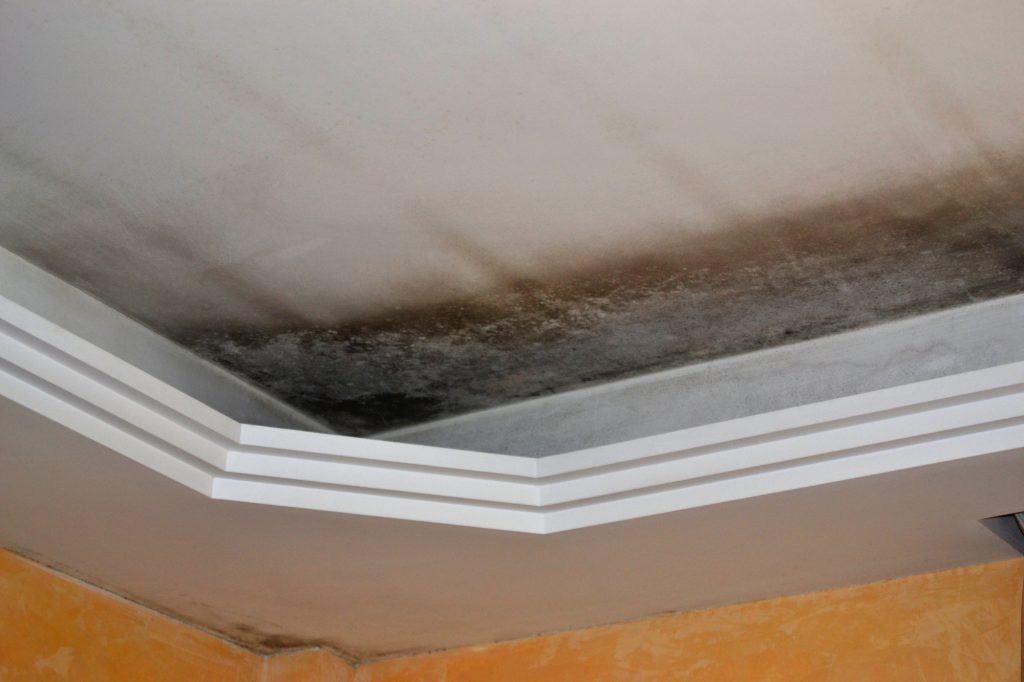
Some of the earliest signs of water damage include a musty smell, mold stains on walls, moisture in your carpets, and a discolored ceiling. And if you’re noticing any of these things in your home, you should be cautious. That’s because water damage can lead to much more serious issues that are beyond repair. If you experience any of these symptoms, it’s important to call in professionals and start the process of mold remediation.
HVAC System and Ventilation
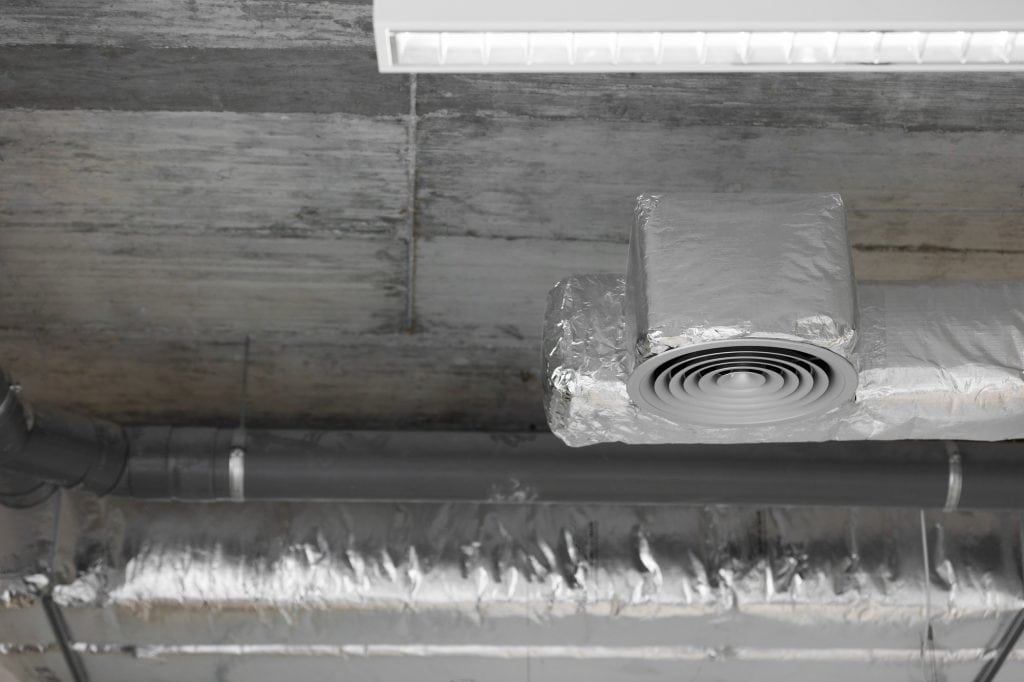
If you have high-efficiency air conditioning, ventilation is easy to find. If your HVAC system doesn’t work well, you should test for mold. Excessive humidity in an area of your house could indicate that there is water damage or that the HVAC system needs to be replaced. Ventilation can help improve airflow and minimize moisture accumulation and promote a healthy environment for occupants.
You need to test for mold in your home if:
– Your HVAC system isn’t working
– You’re noticing the first signs of water damage
– The humidity level in your room is very high
Basements and Crawl Spaces

The first sign of mold in the home is usually a musty smell. In fact, most likely the only way you’ll notice this is from the strong odor. However, it can also be difficult to see mold until it grows to an extreme point. Mold can grow on any surface in your home, but an infestation will usually take place in a basement or crawl space.
The best way to find out whether or not your house has mold is by testing for it before it becomes too serious. Basements and crawl spaces are some of the areas most susceptible to mold growth because they are damp and dark, which allows mold to thrive.
When you have noticed that there is a musty smell coming from your basement or crawl space, try testing it for mold first. If you find that there’s any sign of mold, don’t hesitate to contact professionals immediately.
Check for Puddles of Water
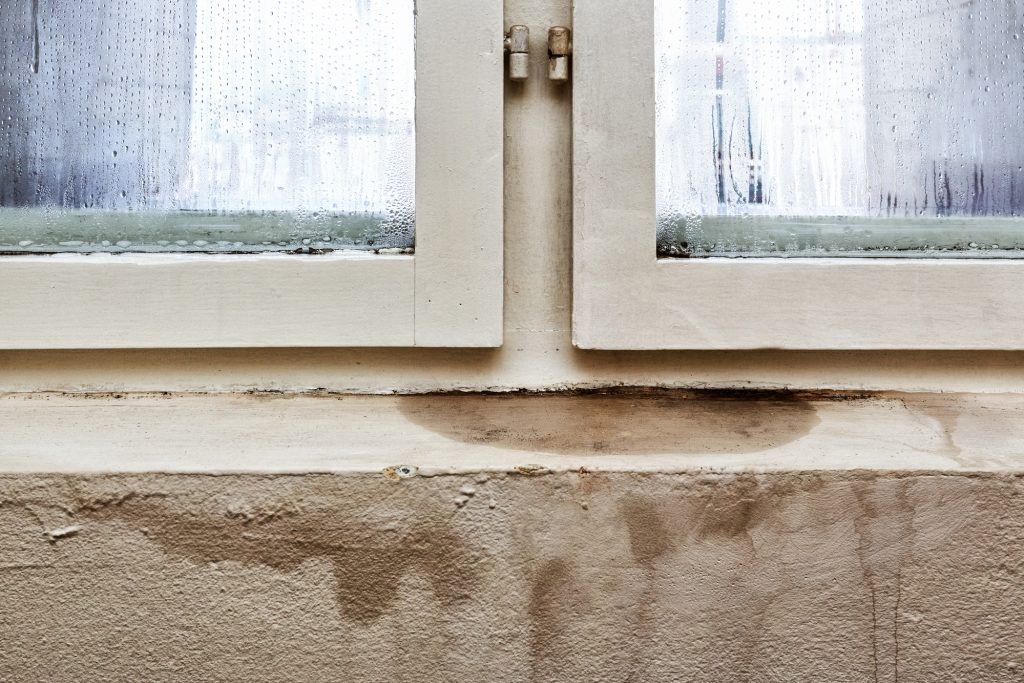
It’s important to check for puddles of water near your home. When you spot a puddle, it’s likely the result of a leak that occurred when your home was under construction or during a recent severe weather event. If you see this type of puddle, it means there’s an issue with your home that needs immediate attention.
You should also be on the lookout for any changes in the color of your home’s water. If the color has changed from its normal state, this could indicate an issue with your pipes or foundation. The color change is caused by dissolved minerals and organisms in the water that have oxidized and discolored it. Finding mold in your home can be scary, but identifying these signs will ensure that you don’t have to worry about potential damage later on
Look for Discoloration
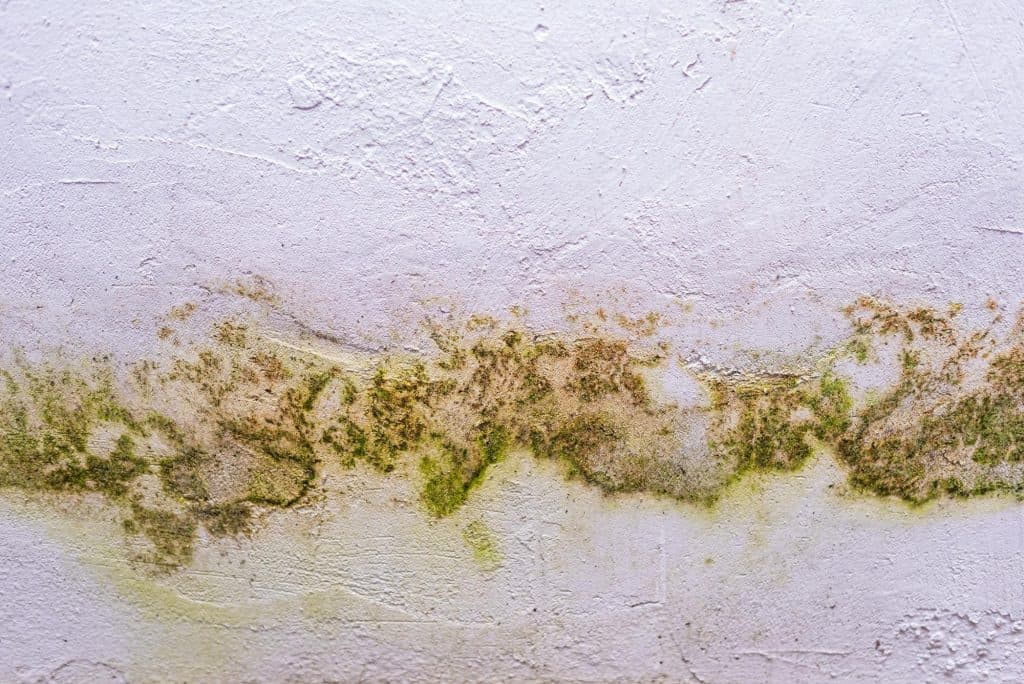
One of the first signs that water damage is present in a home is discoloration. In fact, it’s one of the most common signs. If you notice your walls or carpet are beginning to show signs of discoloration, it could be due to moisture seeping into your home. These spots will likely turn brown with time, so take note if you notice anything unusual about the color of your walls or flooring.
In addition to looking for spots where there may be moisture, look for other telltale signs. Mold likes dark and dank environments so keep an eye out for places where light doesn’t reach like behind furniture and in corners or cabinets. You should also keep an eye out for any strange smells that might indicate mold has infiltrated your home.
Check for Drip Marks
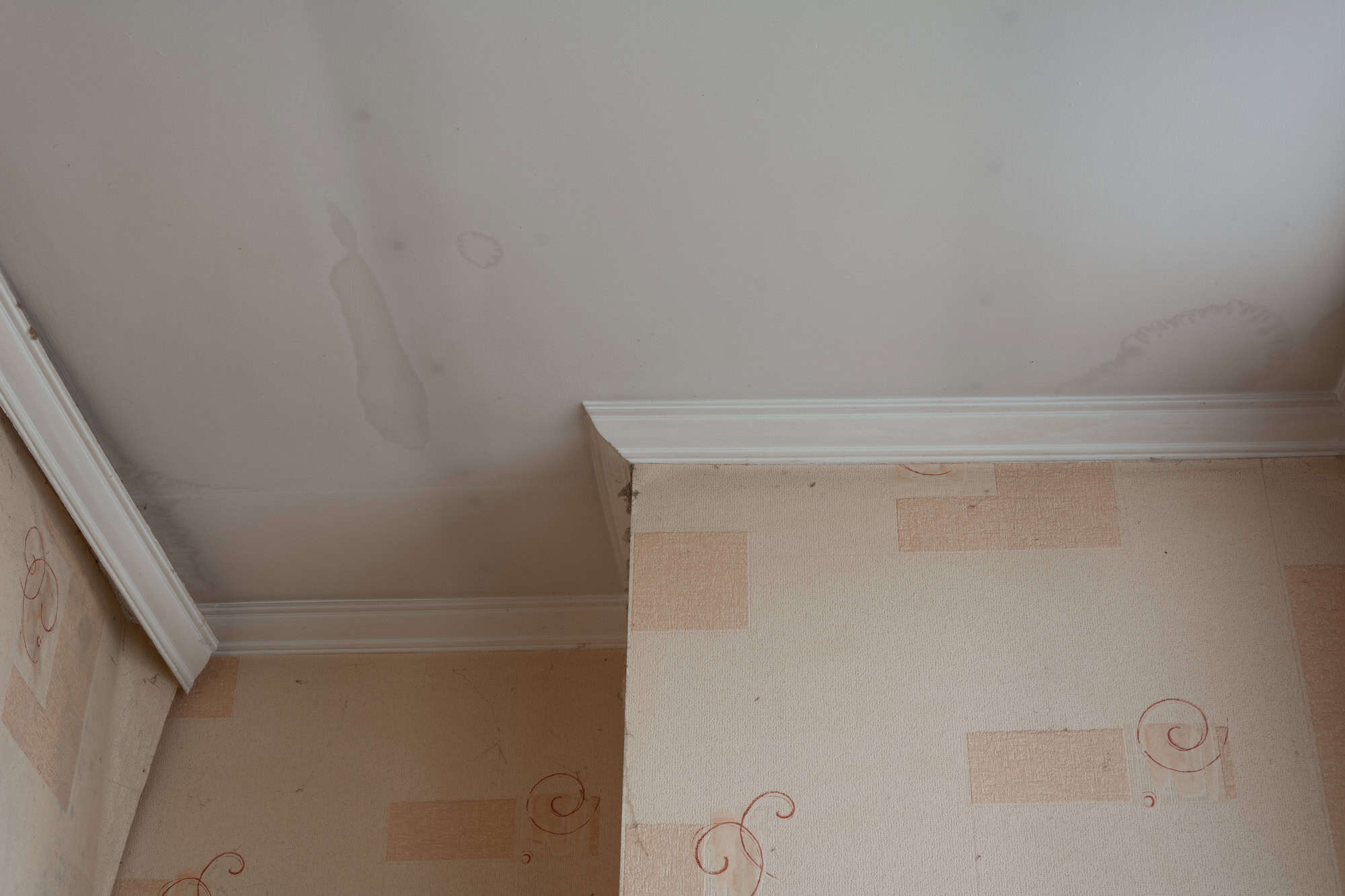
When you notice water damage, the first thing to do is to check for drip marks. These are the telltale signs of wetness that let you know there is a problem. Mold thrives in moist environments, and if you find any drip marks around your home it means that the area has been exposed to excess moisture. Check your ceilings, walls, floors, carpet, and windows for any signs of drips or mold.
Next, look for any other sources of moisture in your home. If you have a humidifier or dehumidifier that runs continuously or constantly refills with water, this can be a major source of mold growth inside your home.
If you notice condensation on walls or windowsills and don’t know what it’s from, it could be a sign that there’s too much moisture in the air. If this sounds like it could be an issue in your home, consider checking out your HVAC system and ensuring that no leaks are taking place.
Finally, observe for other signs of water damage such as staining on ceilings or flooring materials and discolored ceiling tiles. If these things sound familiar to you then it might not be mold but rather an issue with your plumbing system or humidity levels inside your home.
Look Out for Rotting Materials
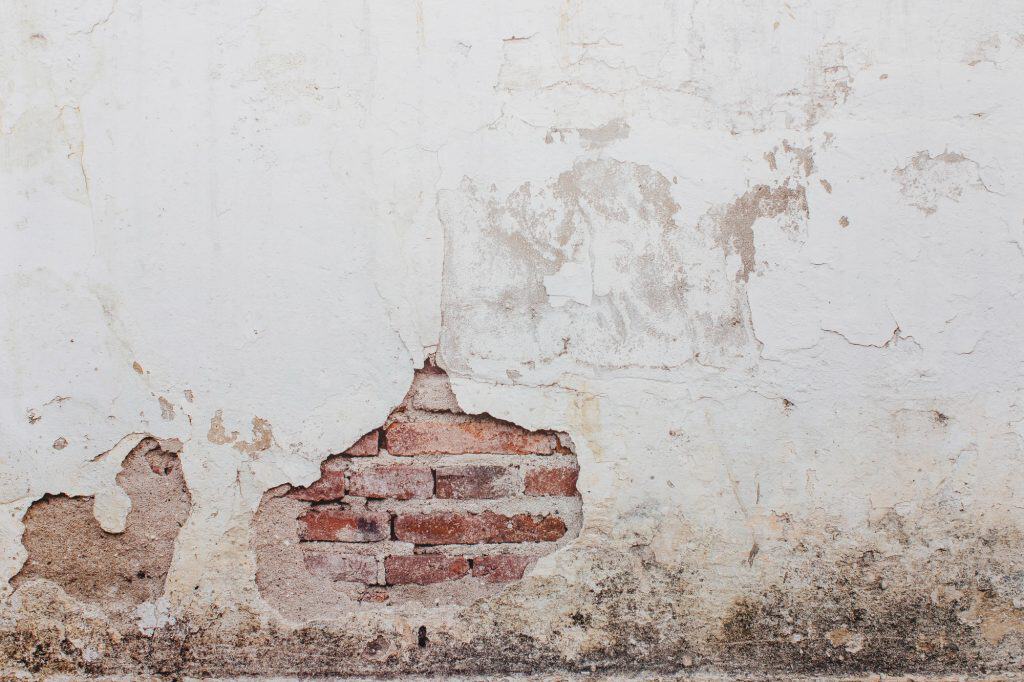
The first step to taking action against mold is noticing it. If you notice any telltale signs of water damage, such as the presence of wet materials or a musty odor, this is your cue that you might have a mold issue.
After identifying the issue, it’s important to take action quickly. Mold thrives on moisture, so removing excess moisture from your home will be essential in remedying the problem.
This can be done through simple techniques like turning off leaking faucets and opening windows at night when possible to allow moisture to escape your home. With these quick fixes, you can help reduce the risk of future issues with mold.
Test for Smell & Growth
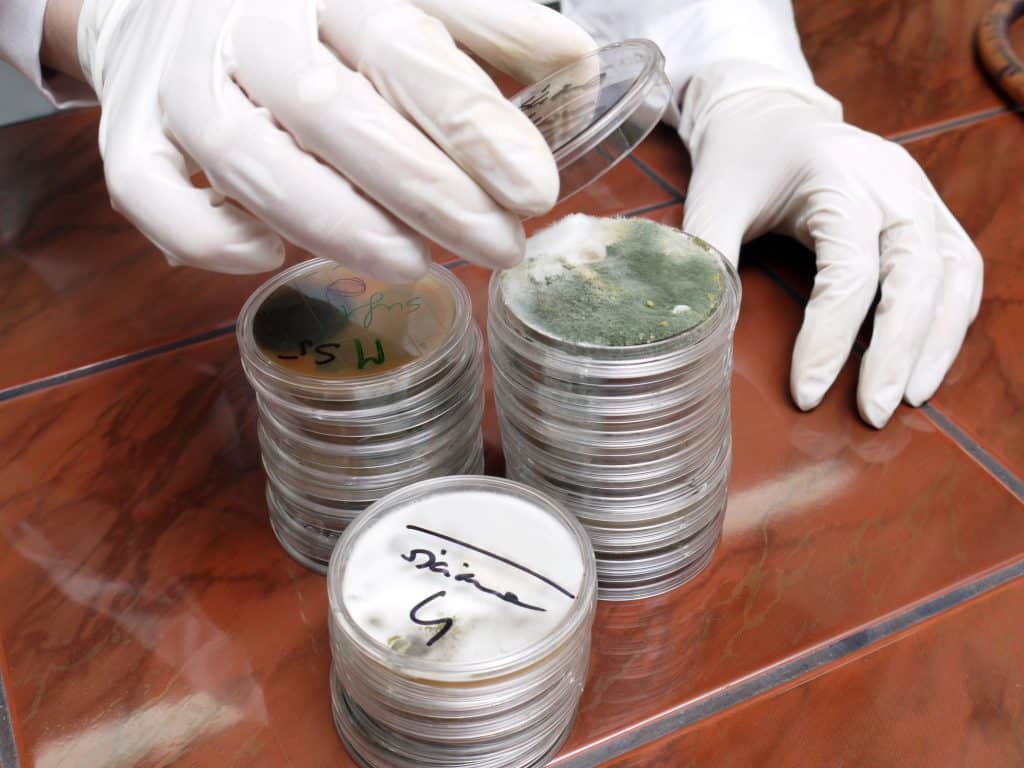
For starters, if your home doesn’t smell like mold but you notice some growth, it’s a good idea to set up a DIY test. Simply place some cotton balls in areas that are known for having high water leaks and allow them to dry out. If you notice the cotton balls turning brown, that means there is potential mold present. Another easy-to-use and inexpensive way of detecting mold is with a black light. In order to locate any hidden lurking spaces under carpets or behind walls, simply shine the light on the ground or overhead and see what you can find.
Check for Bulging Walls or Ceiling
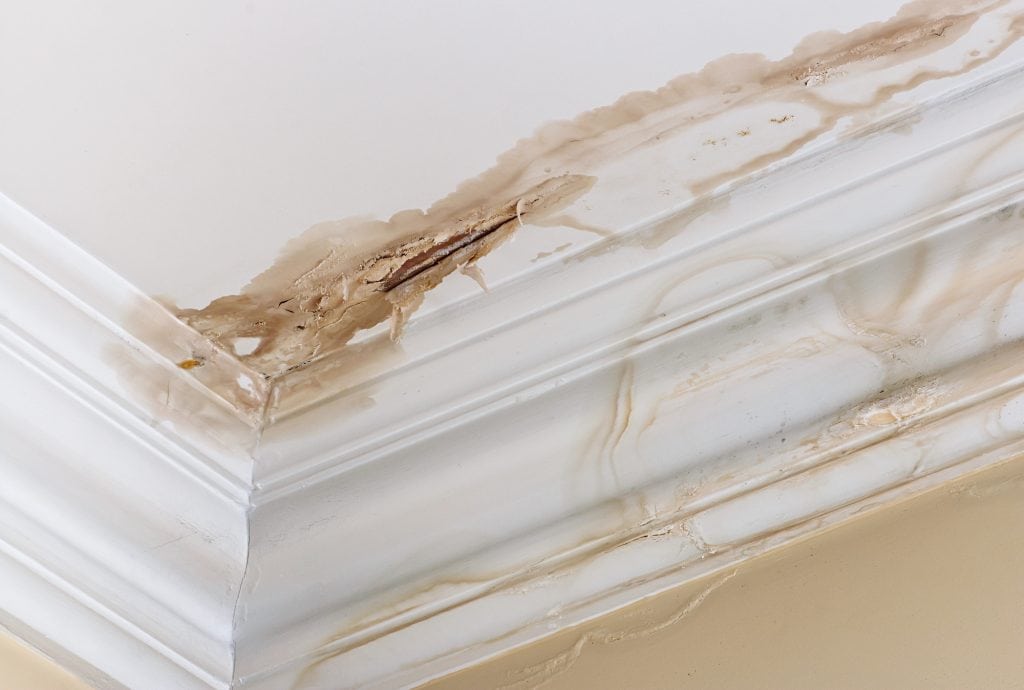
The first sign of water damage is often the formation of mold. If you notice a water spot on the wall or ceiling, this could be your first indication that there might be a problem. The presence of mold leads to the release of particles from its cells, which helps them gain access to areas that were previously unavailable. These particles can cause health issues like respiratory infections or allergies.
If you see these signs, it’s important to take action as soon as possible. You should contact a professional for help assessing the extent of the damage and determine whether or not your property needs to be wiped down or treated with anti-fungal agents.
When Should You Call a Professional?
If you find yourself noticing the signs of mold outlined in the first section of this guide, it’s time to call a professional.
If your home is suffering from water damage due to mold, then you should definitely consider hiring a professional. But if it’s not yet that serious, some DIY steps can be taken to address the issue.
In any case, as long as you’re able to detect the early signs of mold and handle it appropriately, you can prevent further damage before it becomes too severe.
Conclusion
In order to protect your family, the first step is to find the source of the moisture. Once you have found the source, you can begin to take steps to get rid of the water damage. Here are some tips:
- Look for signs of water damage and mold such as discoloration, bulging walls, dripping ceilings and rotting materials.
- Check your HVAC system and ventilation system.
- Check your basement or crawlspace for puddles of water.
- Test for a smell that indicates mold growth.
- Look for drips marking on walls or ceiling.
- When you are dealing with an issue like mold, it is best to call a professional.
How To Winterize Your House: 5 Simple Ways to Prepare for the Cold 29 Dec 2022, 8:03 pm
Winterizing Your Home: A Guide

The colder it gets outside, the more likely you are to start feeling cabin fever. And while indoor heat is convenient and makes us feel safe from the elements, it also keeps us from taking advantage of them.
Keeping your house cool in the summer and warm in the winter can be challenging, especially if you live in an older home that shows its age with slow leaks and drafty windows.
Fortunately, there are simple things you can do now to make sure your home is ready for colder months ahead. You don’t need to wait until spring just to get started on maintenance.
Read on for 7 tips on how to winterize your house so that it’s ready when the temperature drops.
Preparing Your Home for Winter
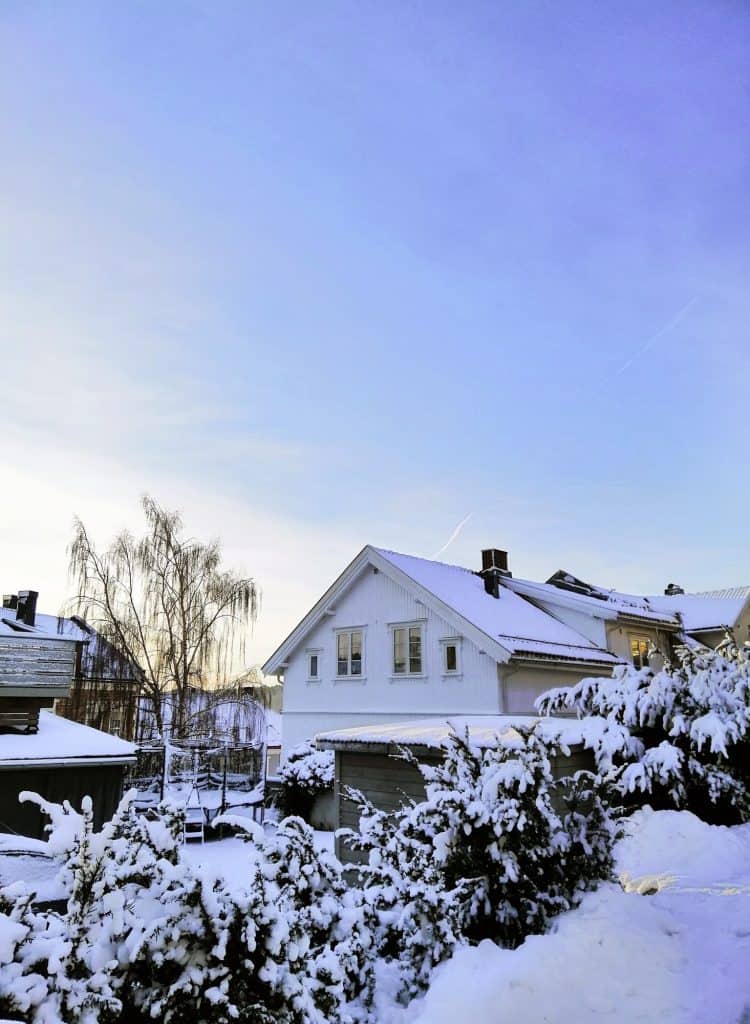
Leaks can be found in many different places – in windows and doors, in the roof, and even on the outside. To tackle these issues, you need to start with an inspection of your home. The most obvious place to find leaks are on your roof.
If you spot a leak, or have any doubts about its size, it’s time to call a professional to assess the damage.
Next up is winterizing your home by investing in adequate insulation. Having proper insulation will help keep your house cooler in summer and warmer in winter. For example, if you have insulated windows that are drafty or poorly sealed around the window frames, it’s time for them to get replaced.
As for keeping water from building up inside during the winter months, consider installing weather-stripping around exterior doors and windows (like rubber seals). Weather-stripping prevents cold air from entering through gaps between
walls and floors as well as excessive condensation buildup by stopping air flow into cold rooms.
By preparing for winter now, you’ll save yourself money down the line!
Insulate Any Exterior Pipes

Old homes can have a variety of problems. One of those problems, especially in old homes, is the pipes.
In order to prevent them from freezing or bursting, you should insulate any exterior water pipes that are exposed to cold weather.
This includes the entrance points of your home’s plumbing system as well as any other areas that your home may need to maintain temperature in case of an emergency.
You could also insulate your home’s irrigation and sprinkler systems if you live in a warmer state with colder winters or if you have some sort of landscape such as plants or trees that require a lot of water.
Install Insulated Covers on Exterior Faucets
Make sure your faucets are sealed with insulating covers. This can help prevent the heat from escaping, which will keep your home both warmer and colder.
Ensure proper drainage by having your gutters cleaned and downspouts extended
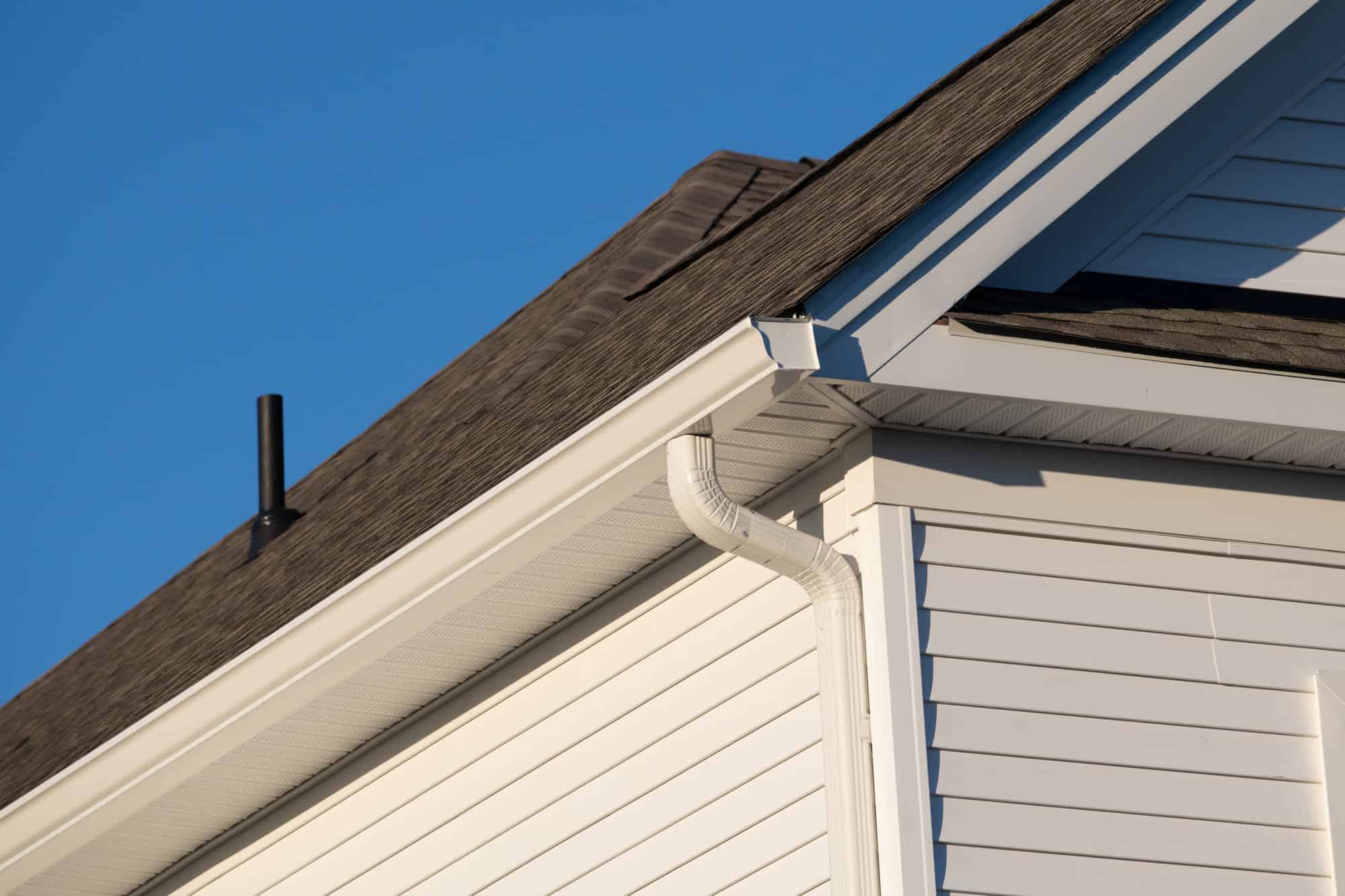
If your gutters are clogged with leaves and debris, they won’t be able to do their job. As such, you need to take care of them before winter weather sets in.
If you don’t have an accumulation of debris in your gutters, you can save yourself the hassle of hiring a professional service by cleaning it yourself. The next step is to extend the downspouts from the roof so that water flows away from your house more efficiently.
This will help prevent overflowing into the foundation and melting snow and ice from building up on your property.
Install weather stripping around windows and doors

Aside from windows, you can also install weather stripping on your doors by cutting off excess length of the door trim and then flipping it up to cover the threshold.
Allowing heat to escape through your house’s entryways is one way that
you could end up with a drafty home or an air conditioner that constantly needs to work harder during the winter months.
Weather stripping is a simple, barrier-type material that comes in a variety of materials and it’s often installed around doors to help keep the heat in.
If you have a fireplace, have it professionally cleaned

Make sure that your fireplace is in good shape first. A professional cleaning, if needed, can help ensure you’re safe and warm this winter.
Check for any openings that animals can enter and close them
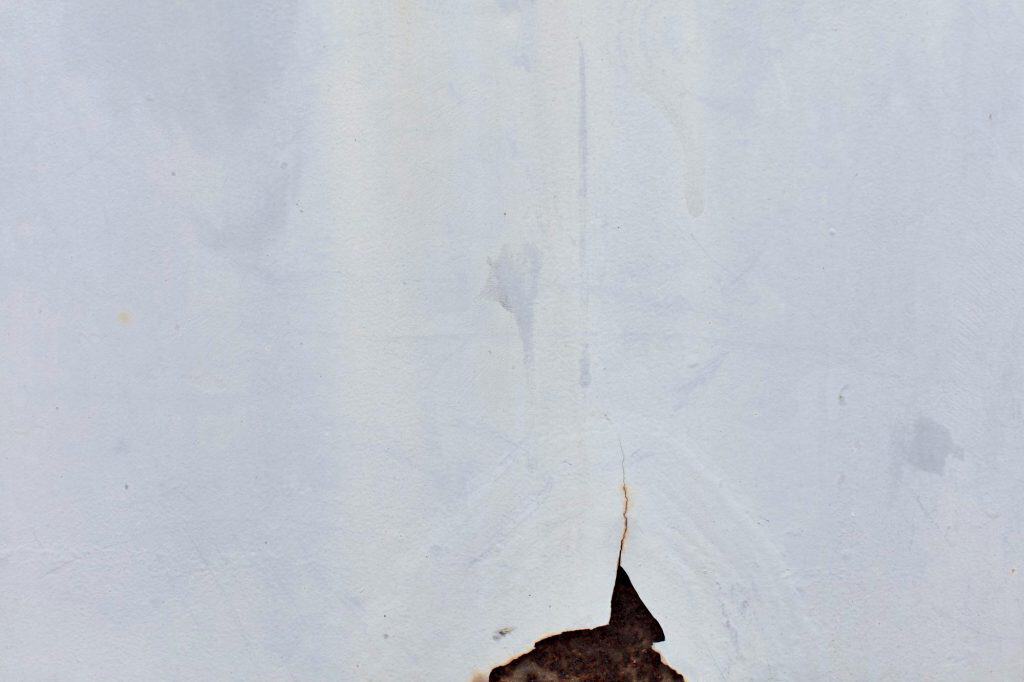
Animals are drawn to warm, cozy places in the winter, making it important to close up any openings they can use to get inside.
First, make sure you check for any gaps near your door that animals could use to enter your bedroom or home office. You should also make sure any windows or doors in your house are securely closed and locked.
If you have pets, then take extra precautions by checking for any holes that animals could squeeze through in the walls near the floorboards.
Animals tend to find these holes when they’re looking for food and water throughout the year.
Add insulation in your attic to prevent ice dams
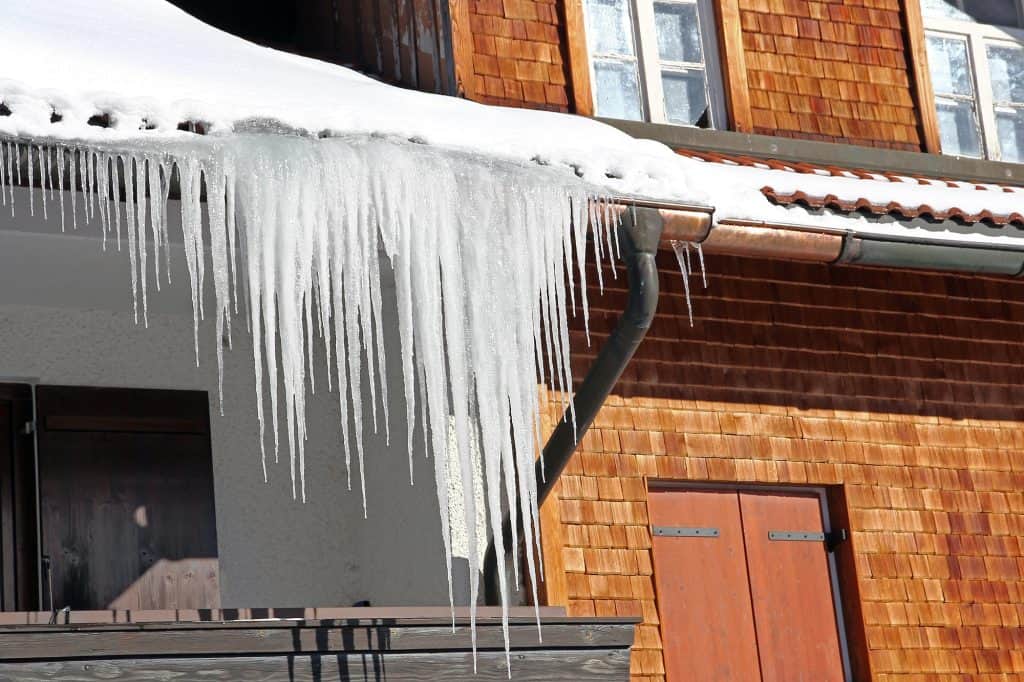
Insulation is an important part of winterizing your home. Insulation can come in the form of fiberglass, cellulose, or blown-in insulation. Depending on the type of insulation you choose, it will either lower your energy bills or provide a
more efficient home.
Additionally, insulation prevents condensation from forming on windows and walls and gives your house a cozy feel even when it’s cold outside.
One way to insulate your attic is by adding rigid foam insulation in all rafters and walls. This insulation can block up to 40 percent of heat loss caused by air leakage into your attic, which keeps warm air near the ceiling where it belongs!
Your House with Insulation

If you’re looking for an easy way to winterize your home, insulation is a good place to start. It can be costly, but it’s worth it because not only is insulating your home better for the environment, it also helps prevent drafts and cold spots. The next step on your list should be wrapping up your house in plastic sheeting. A typical roll of plastic sheeting will cost about $30-$40 and will help protect items from outside damage as well as cut down on drafts. For added protection, consider using tarps or drop cloths which are easier and more effective than traditional plastic sheeting.
5 Things Your Home Inspector Will Be Looking For 28 Dec 2022, 11:49 pm
Home buying can be an exciting process, but it also comes with a lot of worries and fears. That being said, if you’re reading this article, then you probably know that there’s no reason to worry. You know that your home is in good hands because you’ve taken the time to find a reliable home inspector who will help you through the inspection process so that nothing is left unseen.
However, if you’re like most people who are about to buy their first home and are feeling anxious about it, then chances are that you don’t know much about how a home inspection works or what your inspector is looking for when they perform one on your new home. Here are 5 things that your home inspector will be checking during the inspection process:
What's a Home Inspection?

A home inspection is really a comprehensive process that covers everything from the roof to the foundation—and even the electrical system.
The inspection itself takes place when the buyer and inspector both agree on a mutually-agreed-upon date, which is usually after a house has been listed for sale and before it’s officially sold.
During this process, your inspector will be checking for problematic things like termites and water damage, as well as general information about the house such as square footage, number of bedrooms and bathrooms, whether there are any structural issues, or if any systems or appliances need servicing.
Your inspector will also use this time to talk with you about what you are looking for in a new home. In doing so, they will help you avoid purchasing something that doesn’t suit your needs or isn’t within your price range.
What to Expect During a Home Inspection
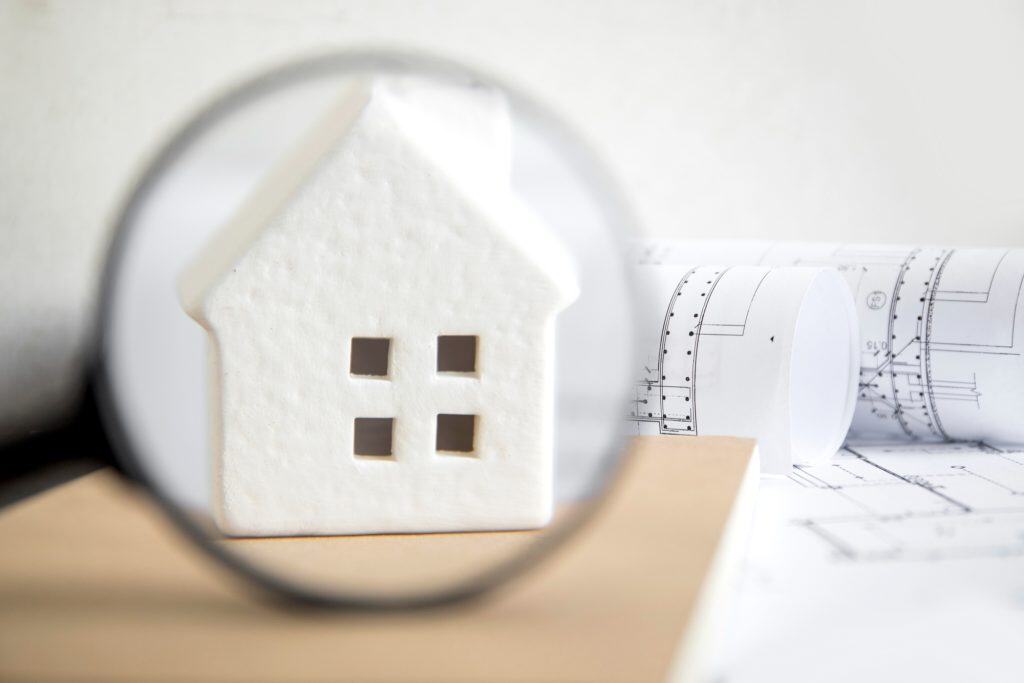
If your home inspector is checking the structural integrity and the roof, then they’ll be looking for any signs of damage or leaks on the ceiling, walls, and floors. If they find any damage, they’ll point it out to you so you can have it fixed before making a purchase. They’ll also check for any signs of mold or dampness on the ceilings because these are signs that there might be a leak somewhere in your home that needs to be addressed as soon as possible. The inspector will also check the roof for any missing shingles or other indications of damage like cracks or holes, which could indicate that there has been a major storm recently or that there might be something wrong with your roof altogether (like water damage).
Check for Foundation Damage

First, your home inspector will check the foundation to make sure that it doesn’t have any damage. This could be caused by a lot of things, including soil erosion or water damage. If there is any damage on the roof or walls, then that’s also something that your home inspector will check for and note on their report as well.
Secondly, they will look at the floor to make sure that it isn’t cracked or damaged in any way. This usually results from tree roots growing inside the foundation and pushing against the outside walls. If you see anything suspicious while they are examining the floors, they will mention it on their report as well.
Next, your home inspector will inspect all of the wood in your home to make sure that it hasn’t warped or warped too much due to moisture or weathering over time. They may also note anything damaged if they find anything out of the ordinary during this inspection process too.
Lastly, your home inspector will also take a look at all of the siding on your house to make sure that it isn’t peeling up and compromising its structural integrity or being worn from weathering over time too.
Check for Leaks in Your Roofing System
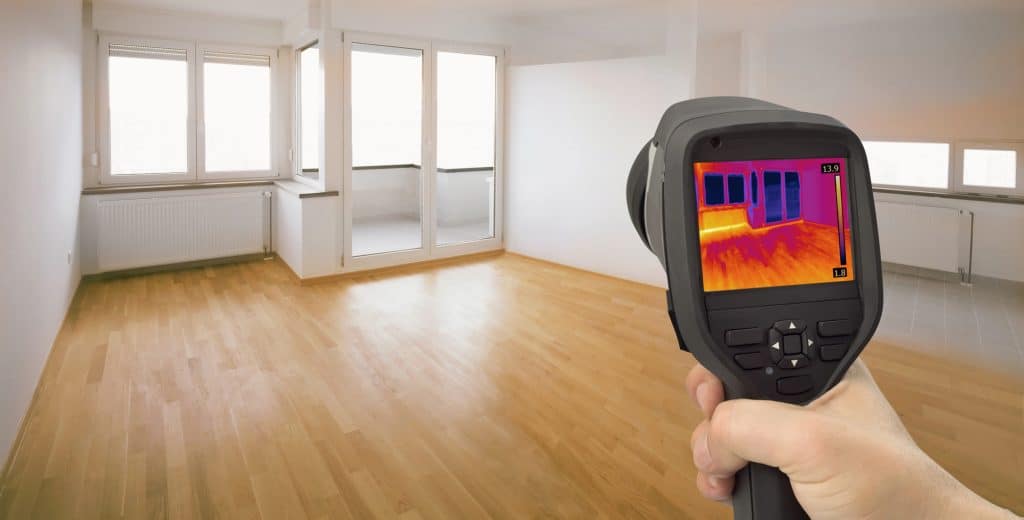
If you live in the northern United States, then you know that winter is around the corner and snow is always on the horizon. The point of this is to remind you that if your roof has a leak, it’s likely that your home will be a real mess in no time. Your inspector will check for leaks in your roofing system and determine whether or not they can recommend any repairs or replacements. If there are issues with your roof, then you might want to consider getting an estimate from another contractor rather than trying to fix them yourself.
Check the Interior Including Appliances and Mechanicals

Once completed on the exterior, one of the things your home inspector will do is check the interior, which includes appliances and mechanicals. They are checking to make sure that your home is in good shape and that it has not been damaged by a leak or some other incident. They will be checking for any issues with the heating and cooling systems, as well as the water heater.
Check the Windows and Doors Throughout the Home
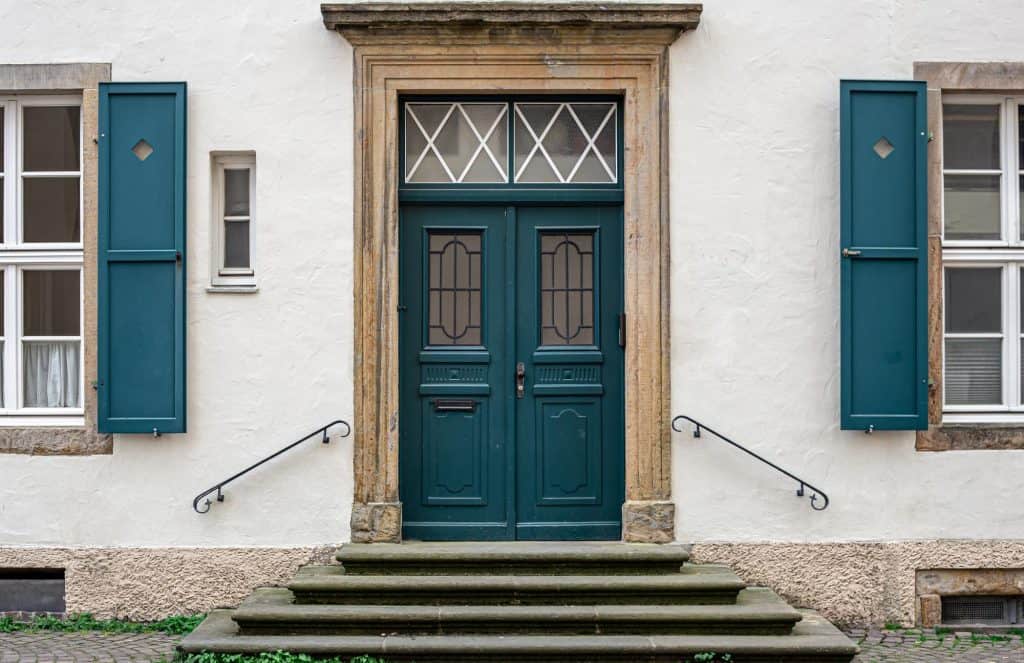
Your home inspector will check the windows and doors. They’re looking for any signs of water infiltration, which could mean that the window is failing and needs to be replaced. If they spot any signs of this, then they’ll be sure to let you know and to fix it right away.
Also, they’ll be looking for an infrared thermometer so that they can ensure that there are no hidden dangers near the heating or cooling systems. The inspector will also check the plumbing, so that you don’t have something leaking into the walls while you’re not home or while someone else is at home. If there are any structural problems with windows and doors, then the inspectors will point them out to you as well.
Check the Electrical System

Your home inspector will be checking for wiring, switches, and outlets to ensure that they’re all in working order. They’ll also check for potential fire hazards like loose wiring or outdated systems such as knob and tube wiring. The inspector will also thoroughly check the electrical panel for any double tapped breakers or improper wiring which can pose a fire hazard.
Wrap Up
Home inspections are great for helping you feel confident about the home that you’re about to buy. The inspector will be checking all of the important items, like the roof and electrical system, so that when you walk into your new home it’s a safe place to live.
Foundation Inspection Tips: How To Inspect Your Foundation 11 Dec 2022, 11:06 pm
Foundation Inspections: A Homeowner's Guide to Identifying Problems
Every home has a foundation, and in most cases, it’s the most exposed part of the property. Because of that, it’s imperative to inspect your foundation every six months (or as needed) in order to keep it in good condition. With regular inspection comes a whole host of benefits for the home and its occupants. A poorly constructed foundation can lead to dampness, mold growth, and structural issues down the line. When left unaddressed, these problems can escalate until they become downright expensive to fix. So what should you look for when inspecting your foundation? Here are some helpful tips:
Inside the Home
Out of sight, out of mind. When it comes to foundation inspection, it’s easy to let the inside of a home go neglected. But this is where you see the most problems because the inside is where you can easily overlook cracks, deteriorating paint, and other issues that will lead to an imminent collapse. Make sure the roof has no leaks and that all windows are closed tight before heading inside.

Check The Basement For Signs Of Dampness and Mold
When inspecting your foundation, check for signs of dampness or mold. That’s because these are common problems that can lead to structural damage down the line. If possible, plug up any leaks and remove any wet insulation in your basement.
If you’re not sure of whether or not the basement is damp, use a water meter to test for moisture at the door of the house (you can buy one from a home improvement store).

Crack In The Foundation?
After you have inspected the foundation for leaks and moisture intrusion, it is crucial that you inspect cracks. Cracks can lead to structural damage and a greater chance of water infiltration.
Lastly, don’t forget to look for signs of rodents like gnawing or burrows in your foundation. These are just some helpful tips on what to look out for while inspecting your home’s foundation. If you ever have any questions about your home’s foundation, consult a professional immediately!
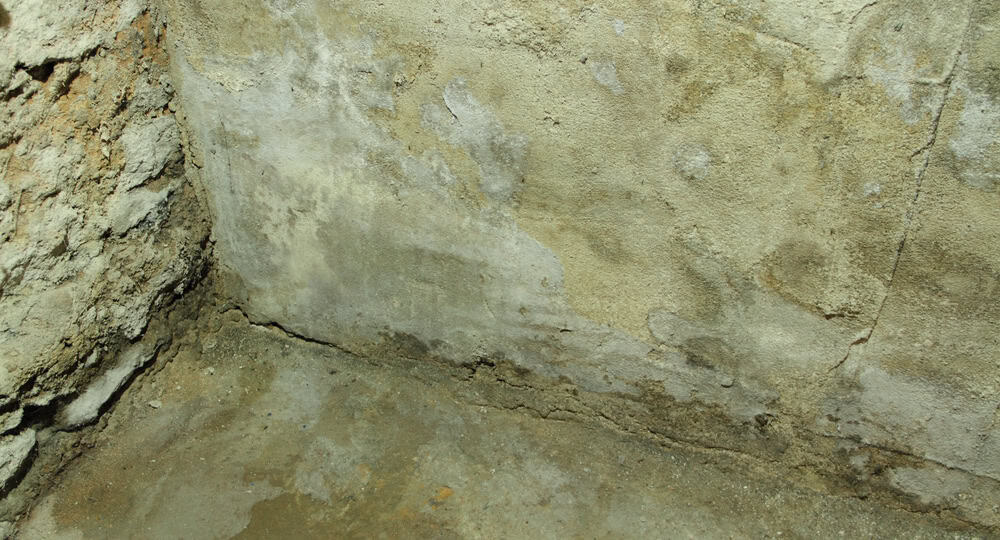
Outside the Home
When you’re outside the home, it’s important to look for cracks in the foundation. Cracks indicate leaks and structural issues that can lead to dampness and mold growth. A good rule of thumb is that if you see a muddy spot around the foundation, it probably needs to be inspected more regularly.
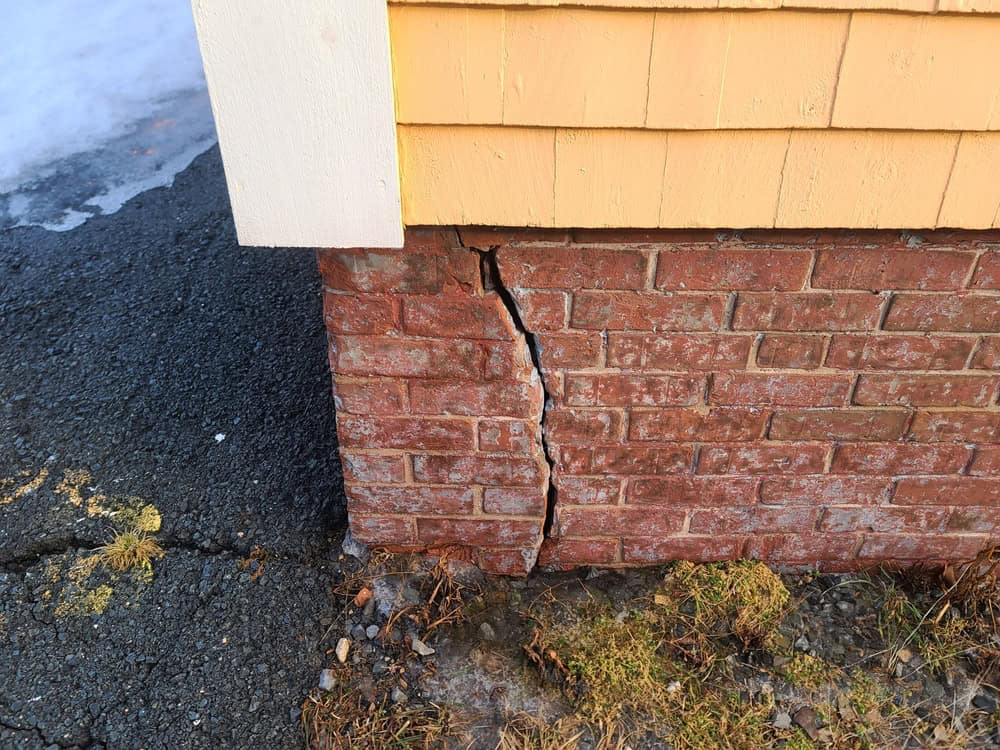
Walk Your Property
Walk around your property and note any areas that don’t feel like they are standing straight. If there are areas in need of repair, it’s a good idea to get them fixed before you have bigger problems on your hands.
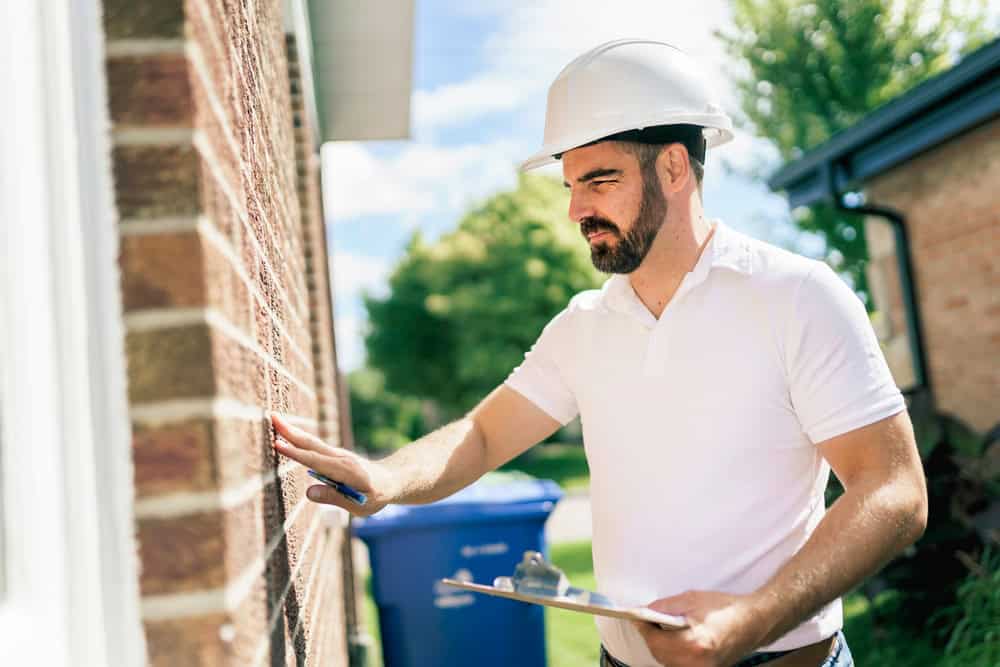
Inspect the Sides and Back of Your Property
When inspecting your foundation, it’s always a good idea to start with the back and sides of the home. The first thing to look for is how close the walls and ground are to each other. If you notice that there’s no gap in between, then you should be concerned about having a possibly unstable structure as well as dampness in that area. Next, take a look at any cracks or gaps in the foundation that show signs of water intrusion. If you see any, this could be a sign of an issue down the line.
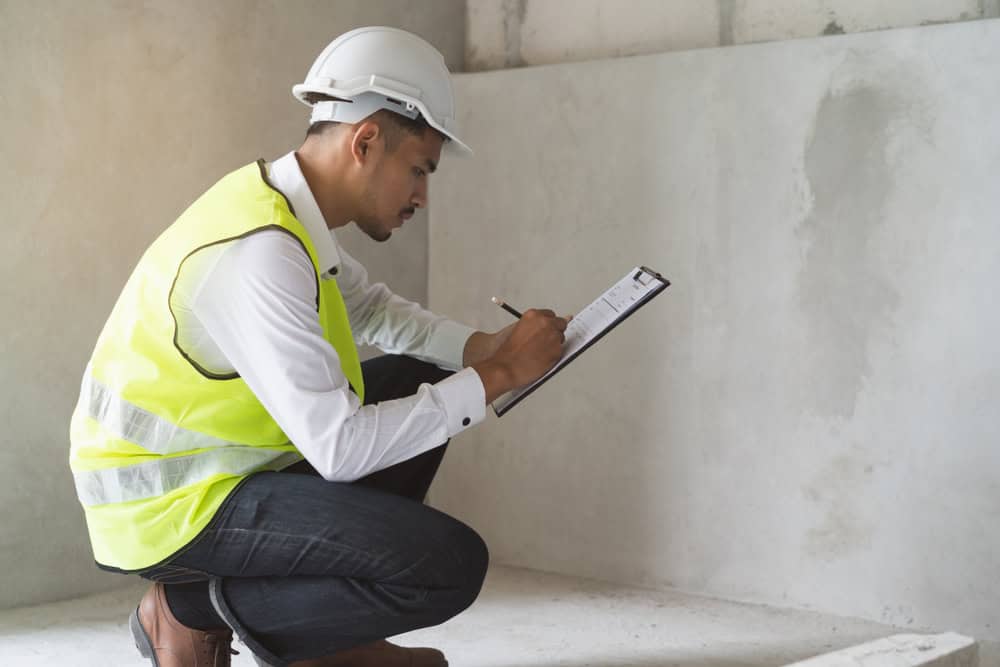
Check for Cracks and Openings in The Foundation
The most important thing to remember is that cracks and openings in the foundation are one of the first signs of a problem. If you spot any cracking or bending of the foundation, it’s best to contact a professional right away.
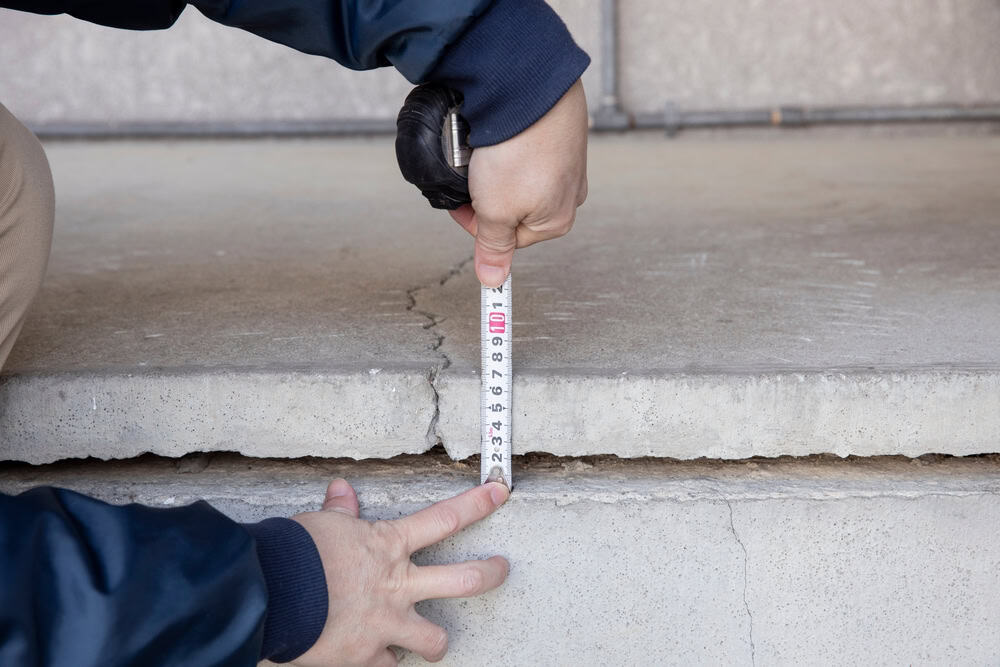
Check for Proper Slope Away from the Foundation
The slope of your foundation determines how much water will flow away from the foundation. If the slope is not steep enough, water will remain in contact with your foundation, leading to rot and mold growth.

Look for Areas of Water Pooling or Low Soil Pockets Near the Foundation
If you notice pooling around your foundation, this is a sign of moisture in the soil. This can lead to foundation issues down the line including structural damage. Regular inspection is key to spotting these issues before they become too significant.

Install Downspout Extenders for Water Management
One of the things you should look for when inspecting your foundation is whether you have installed downspout extenders. These extenders will make it easier for water to drain out of the home and into the drainage system. This will help prevent dampness and mold growth in your home.
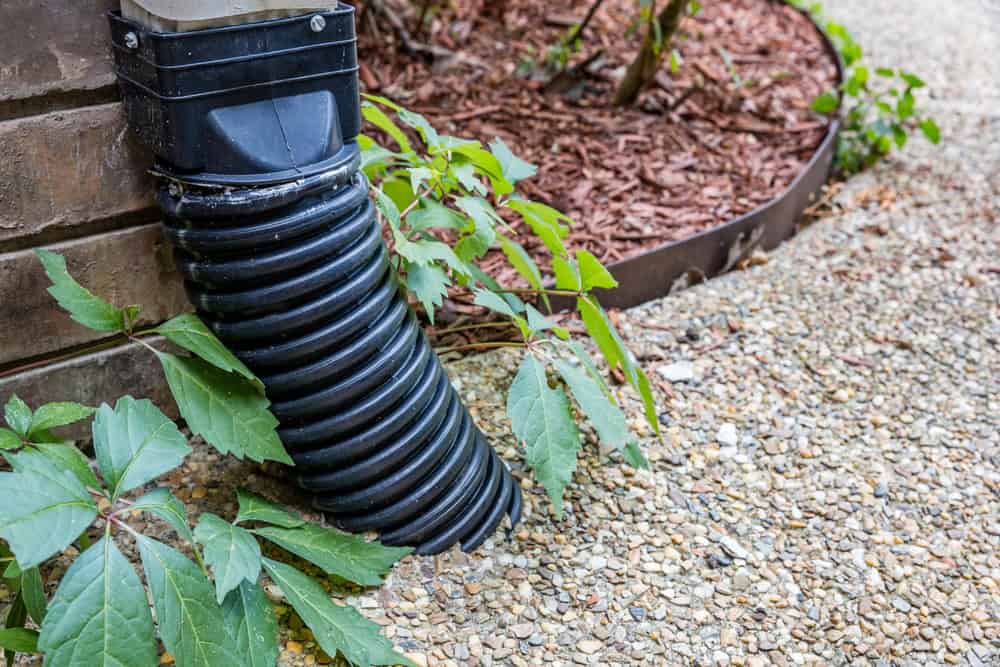
Conclusion
Basic foundation inspection tips can help you avoid problems with your home and protect your family from unwanted natural disasters. Inspecting your foundation is a good idea for a variety of reasons. It will help you recognize if your home has been damaged and fix it before it becomes too big a problem. It can also help you identify areas that you might want to spend more time improving, like the basement or yard. And if you’re not using a builder, it can help you identify whether or not your contractor is doing a good job overall.
What to Expect During a Home Inspection 1 Dec 2022, 10:11 pm

Before you put down a deposit on that dream home, you’ll want to know it’s going to be everything you expected. And if the house isn’t up to snuff, you might need to get out of that contract ASAP. That’s where a home inspection comes in handy — it gives potential buyers peace of mind that they won’t run into any major problems when they move in. It also gives sellers peace of mind that the buyer actually understands what kind of maintenance is required for the home and what problems could arise from its upkeep. If you plan on selling your house in the future, having an inspection might also help improve resale value; after all, why would anyone bother paying top dollar for something if there are hidden problems? Here we’ll explain what a home inspection entails, its benefits and risks, and how much they cost.
What is a Home Inspection?
A home inspection is a standard part of the process of buying a house. It can be conducted by the seller, buyer, or inspector. When done by an inspector, the inspection covers exterior and interior of the house as well as landscaping and anything else on site. The goal is to identify any major problems that could arise from maintaining or living in the property.

Who Performs the Home Inspection?
The home inspector typically has a background in engineering or construction, and is usually a licensed contractor. They will examine the structure, electrical systems, plumbing system, roofing, heating and air conditioning systems, windows and door frames, foundations and more to make sure the home won’t have any major problems.

Why Do You Need a Home Inspection?
A home inspection gives buyers and sellers peace of mind. It also gives them a better understanding of what they’re getting into.
With a home inspection, potential buyers have peace of mind that the house is up to code and doesn’t have any major problems; sellers know their house will be worth more when it comes time to sell it.
Inspections also help identify problems before they happen, which can lead to much lower repair costs in the long run.
But this comes with risks: potential buyers or sellers who are not well-versed in home inspections might assume that everything is going to be perfect, but they’ll soon find out otherwise.

Benefits of a Home Inspection
One of the most important parts of a home inspection is checking out the structural integrity of the building. A home inspector will be able to point out potential structural issues, like structural damage or a leaky roof. This knowledge can help you avoid any surprises later on down the road. If there are issues with your house, a home inspector will also recommend fixes that should help make your new digs comfortable and safe for years to come.
Another benefit is knowing if your house has any problems that could have been missed during construction. Your home inspector might find water infiltration, mold or mildew, or mineral deposits in your foundation and basement walls that were missed during construction. These discoveries can prevent you from wasting time and money later on down the line when these problems start showing up unexpectedly.
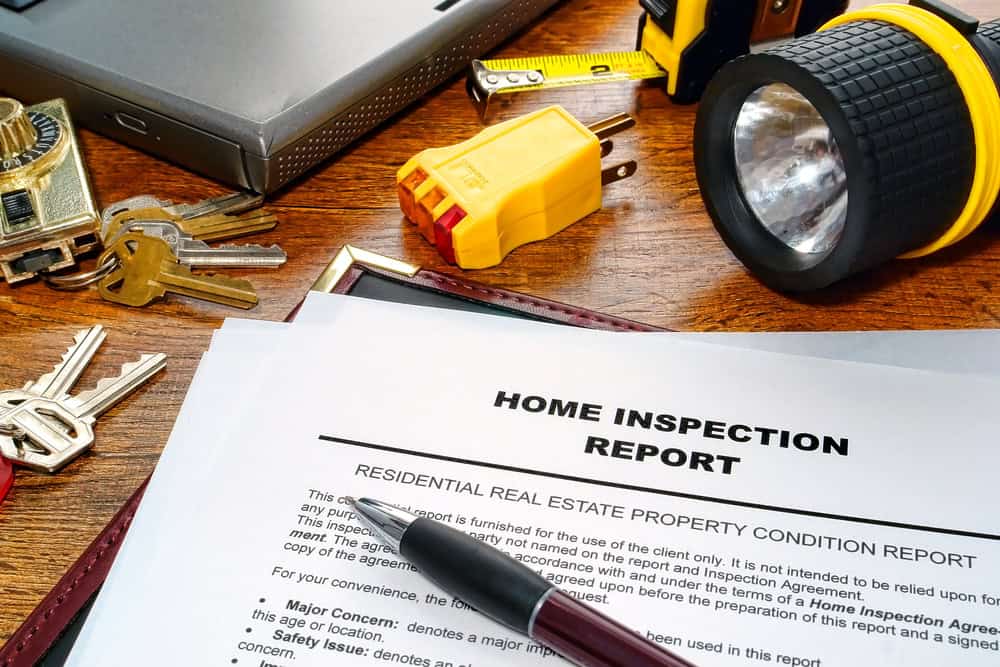
Risks of Having a Home Inspection
The risks of having a home inspection are twofold. For one, the inspection may reveal that you need things fixed that weren’t in your original listing. This could cause delays in the closing process. For example, if an inspector finds that a kitchen sink needs to be replaced and you must put down additional funds for the work, you might end up missing out on other opportunities.
Another risk is that the inspection may identify serious problems with the house, such as lead paint or asbestos. If there is anything like this present, your buyer will likely walk away from the purchase if they find it out before they move in.
Risks aside, there are many benefits to having a home inspection of your property.
Of course it will give potential buyers peace of mind so they don’t have to worry about any hidden problems when moving into their new home — but it will also give them insight and understanding into what kind of work needs to be done and what maintenance they can expect after purchasing the home.
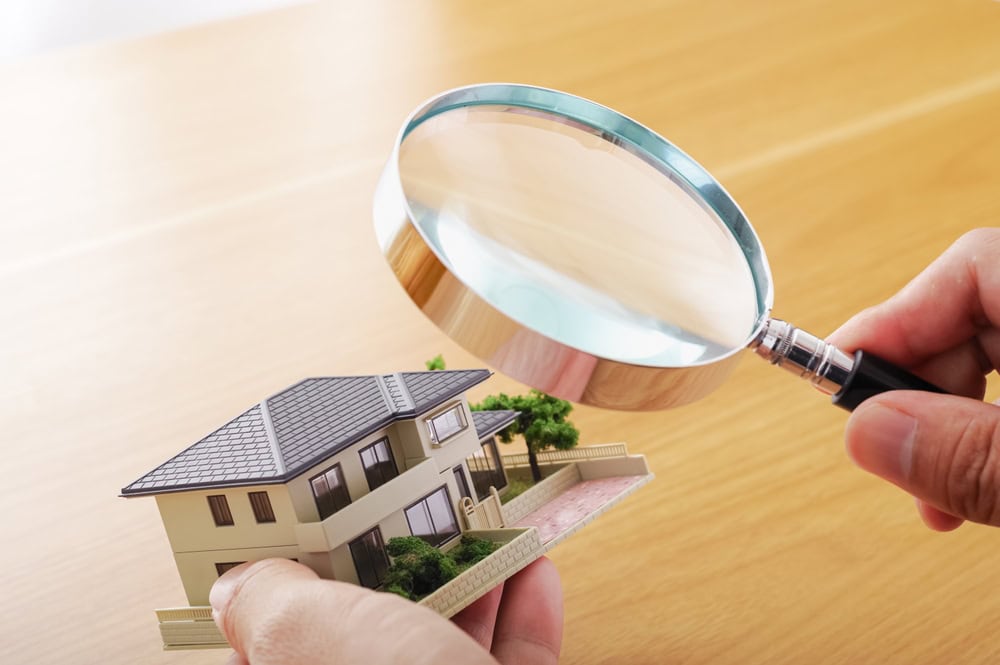
Final Words: Is a Home Inspection Worth the Cost?
If you’re interested in putting down a deposit on your dream home, give yourself peace of mind and the seller the confidence that their house is good to go. A home inspection gives potential buyers an idea of what they can expect when moving into their new home. It also gives sellers peace of mind that the buyer actually understands what kind of maintenance is required for the home and what problems could arise from its upkeep. If you plan on selling your house in the future, having an inspection might also help improve resale value; after all, why would anyone bother paying top dollar for something if there are hidden problems?
If you decide to hire a professional inspector (pending your budget), expect to spend between $300-600, depending on where you live and the size of the property. Generally speaking, a “home inspection” will cover structural items like foundation, roofing and electrical issues as well as mechanical items like appliances and heating systems. Because this is such a wide range (from basic inspections to more extensive inspections), it’s hard to say whether or not an inspection is worth it for you. This decision should be made after weighing the benefits against risks; this article has a list of things that people could find during inspections that’ll help make up your mind.
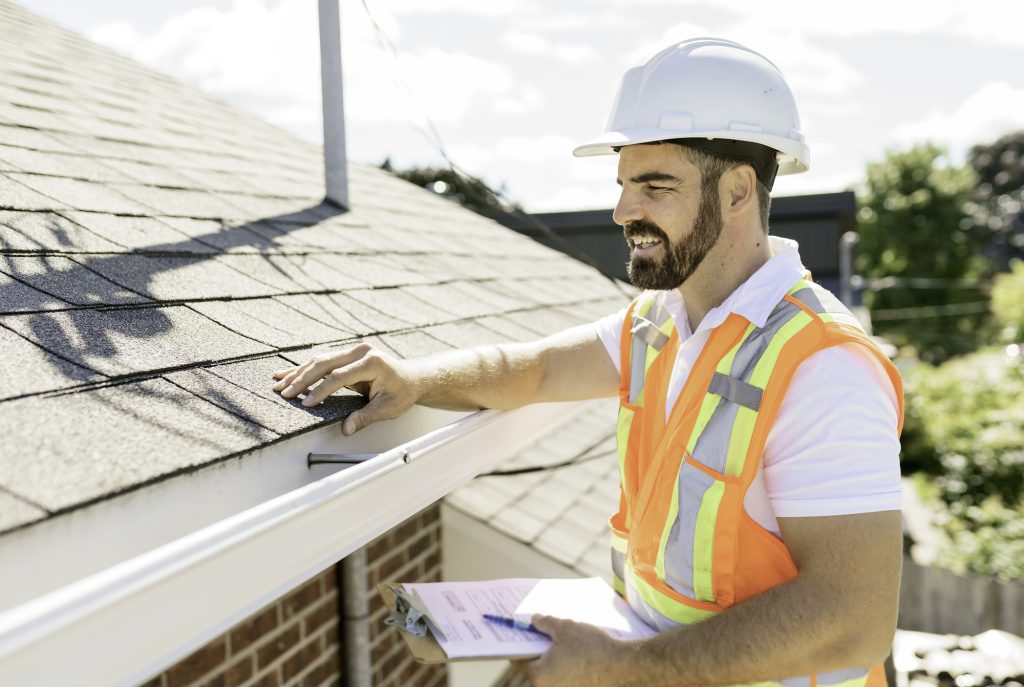
How do You Know You Have Mold in Your House? 29 Nov 2022, 4:56 pm
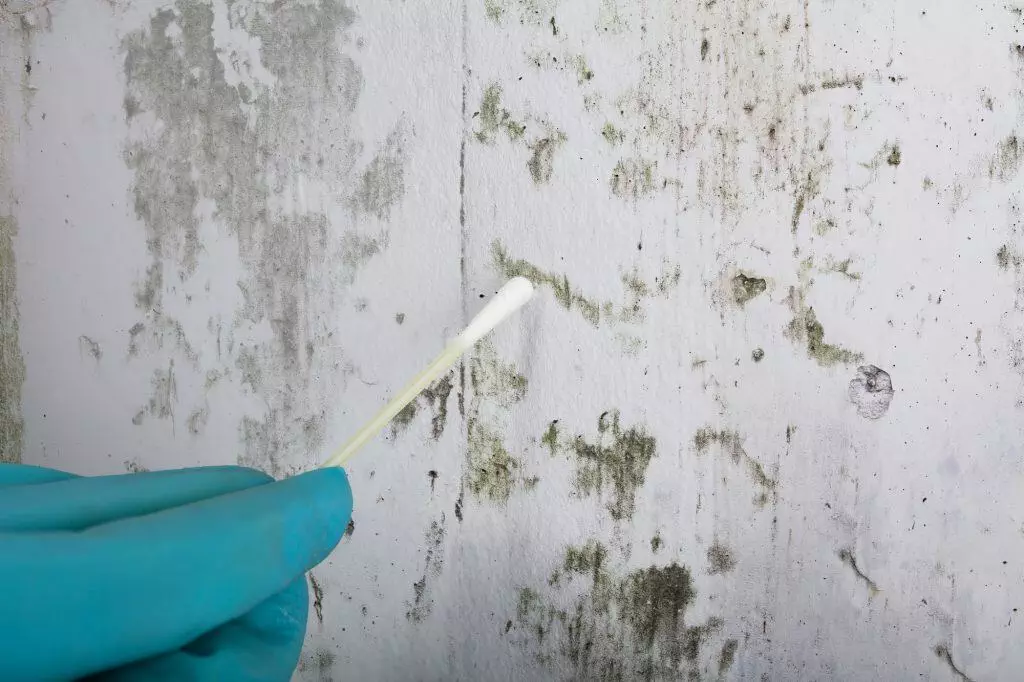
The impact of mold has become a top concern for home owners across the country. While it is hard to know which spores you are exposed to, and how much it could really affect your health. Abundant research on both isolated cases and studies in large populations have revealed strong links between exposure to certain molds and their potential harms. These include allergic reactions, asthma, chronic cough, inflammation of the lungs, skin allergies, and more. However, these are not the only negative effects that can come from exposure to mold. In fact, there are likely more than we realize as many people remain unaware of the dangers posed by indoor airborne molds. Read on to learn more about what causes mold growth indoors and how you can tell if your home is harboring the strain.
What Does Mold Look Like in a House?
Mold can appear in many different shapes and forms. But you can tell if you have mold problems by looking at the roof, walls, and floors of your house. If you see any signs of water damage or yellow stains, this is a sign that you have mold on your property. These are the most common indicators that suggest there is a mold problem.
The other way to identify if your home has molds is to smell them. Mold typically has a musty smell that resembles wet cardboard.
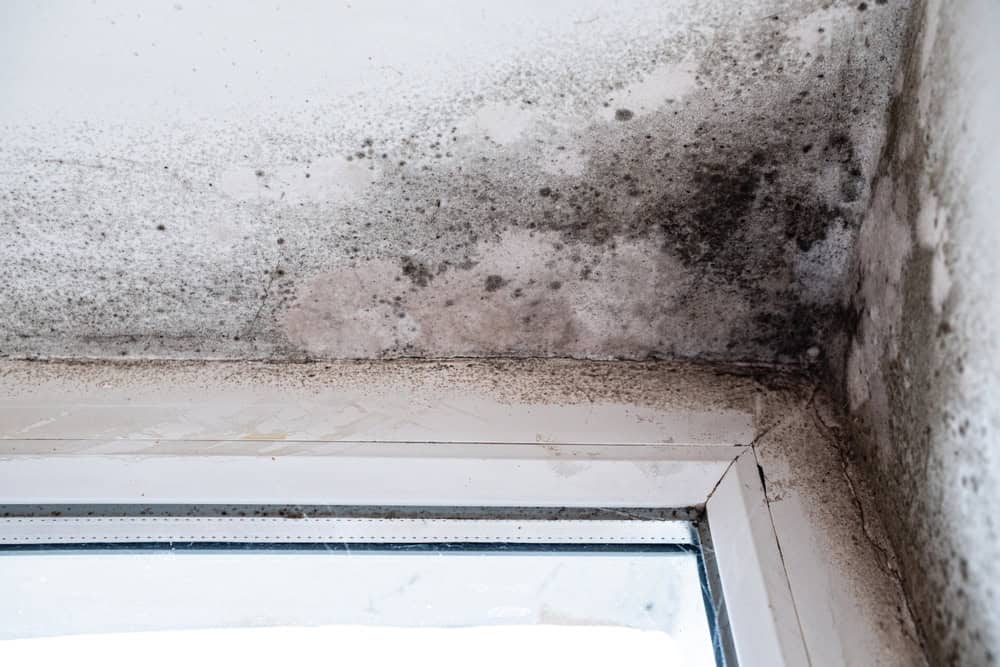
How Do You Know If You Have Mold in Your House?
It is hard to tell by sight alone if there is mold in your home. Mold can often be found in places where it does not look obvious. This includes beneath the sink, on window sills, bathtubs, etc.
If you have a particular concern about mold and want to confirm that it has taken root in your house, then the best way to do so is through a professional inspection.

What Causes Mold Growth?
Mold growth is the result of two common sources: moisture and temperature. Many mold spores are microscopic and can be easily dispersed into the air. This means that any place with moisture or temperature can serve as a breeding ground for mold growth. On the other hand, many molds need specific conditions to thrive. For example, yeast molds require high humidity and temperature to grow, while some molds need darkness.
While these conditions are often found in damp areas like bathrooms, moist basements, or near showers, it is important to note that mold can spread anywhere from the household’s point of entry into the building to its exit (exterior). The main determinant for whether your home will have a problem with indoor molds is how well you maintain their environment.
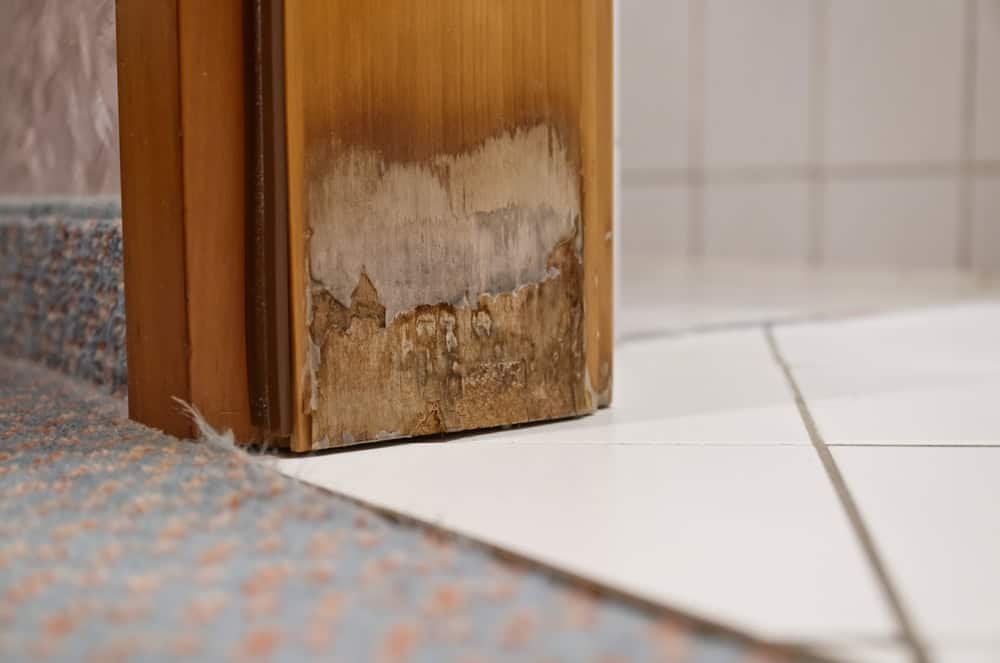
Indoor Air Quality and Mold Growth
To understand how indoor air quality and mold growth are linked, it is important to know the basics of both. Mold is a type of fungi that often grow on damp surfaces like walls, floors, or ceilings. In general, molds reproduce by sending out spores that can be carried into the air and feed on organic material present in the area. On their own, these spores are considered harmless to humans and animals because they cannot survive outside of an environment where water is present.
This means any mold found in buildings will either die or grow only in spaces where water is present like bathrooms and kitchens. For this reason, it is easy for indoor molds to develop when there are high levels of humidity in the air and rainwater collects in low areas around your home.
The presence of certain molds can have negative consequences in your home if you fail to address them promptly. Some molds produce toxins called mycotoxins which may cause allergic reactions or respiratory tract infections among other problems.
These toxins can also react with DNA causing mutations which could lead to cancerous tumors or genetic disorders. There are many other negative effects associated with exposure to some types of indoor mold as well! In order to avoid any such health setbacks, it is important to control indoor moisture levels when possible. This can help keep your home safe from disease-causing airborne spores while also minimizing the risk for mold damage occurring at large scales that would require remediation work later on down the line.

Signs of Mold Growth in the Home
There are many signs that you may have mold in your home. They include:
- The presence of black, green, blue, or yellow stains on a clean surface
- The smell of damp or rotting food
- The presence of moldy material such as wallpaper, carpeting, and insulation that appears wet and moist; the coloration of water from a sink or shower to be off from its normal coloration.

Conclusion
Knowing what to look for is the first step to removing toxic mold from your home. Here are some of the most common signs:
- Black, green, or yellow spots on walls, ceilings, or floors
- Watery or runny mucous from nose and eyes
- Mold smell
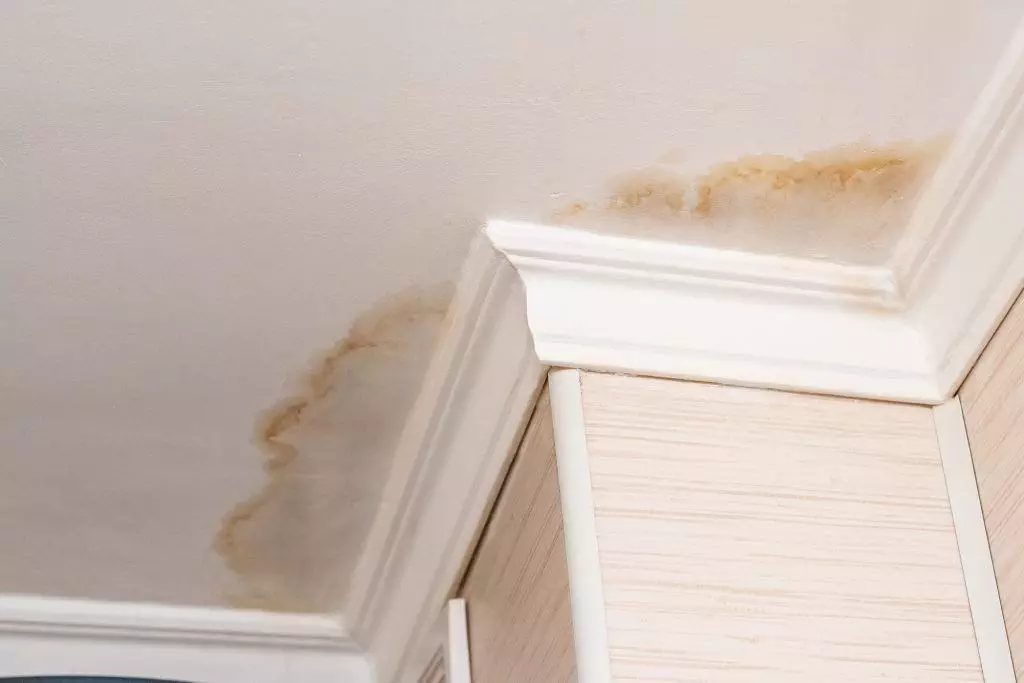
10 Tips to Make Your Home Winter Friendly 24 Nov 2022, 9:49 pm
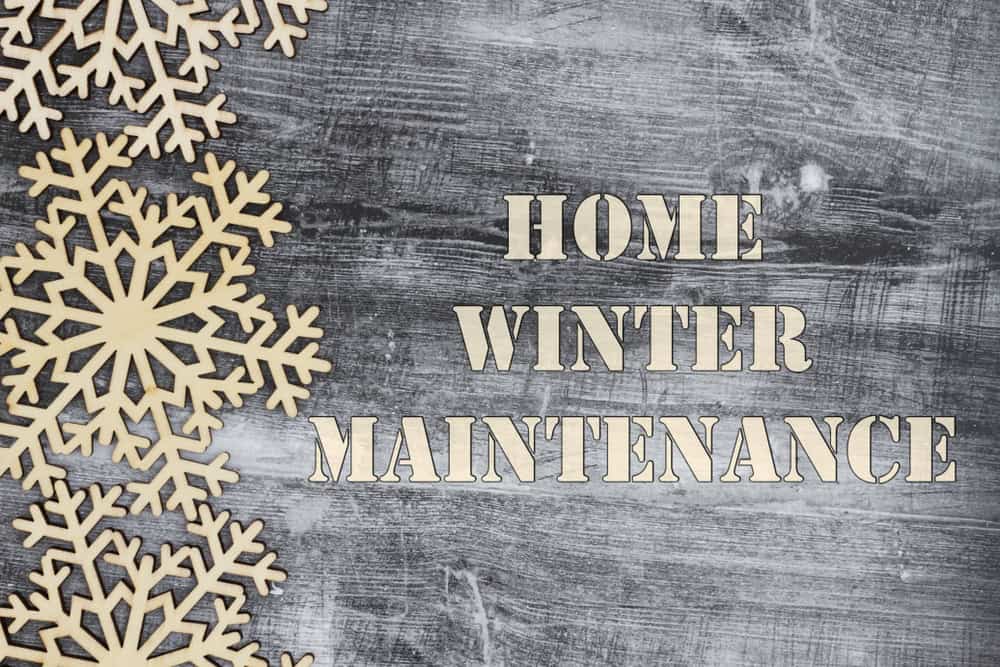
In home maintenance, we’re often so focused on keeping our lawn green and taking care of the exterior that we forget about all the little things that keep our houses running smoothly year-round. Smelly carpets? Check. Damp walls? Double check. But wait, there’s more! If you aren’t getting the proper maintenance done on your home, it’s only a matter of time before everything breaks down. Luckily, winter is the perfect season to tackle these small issues because they are less common than in the summer or spring months when you have more outside activity occurring in your house and less people living there year-round.
Make Sure Your Heating System is in Good Shape
One of the most important ways to winterize your home is by ensuring your heating system is in good shape. If you don’t have a properly functioning heating system, both your indoor and outdoor areas will be at risk for damage from extreme temperatures. Keeping your heating system in good shape doesn’t just help you during the cold months, it makes sure that you can use it year-round as well. Besides keeping your heating system in good shape, make sure all other parts of your heating system are functioning properly as well.
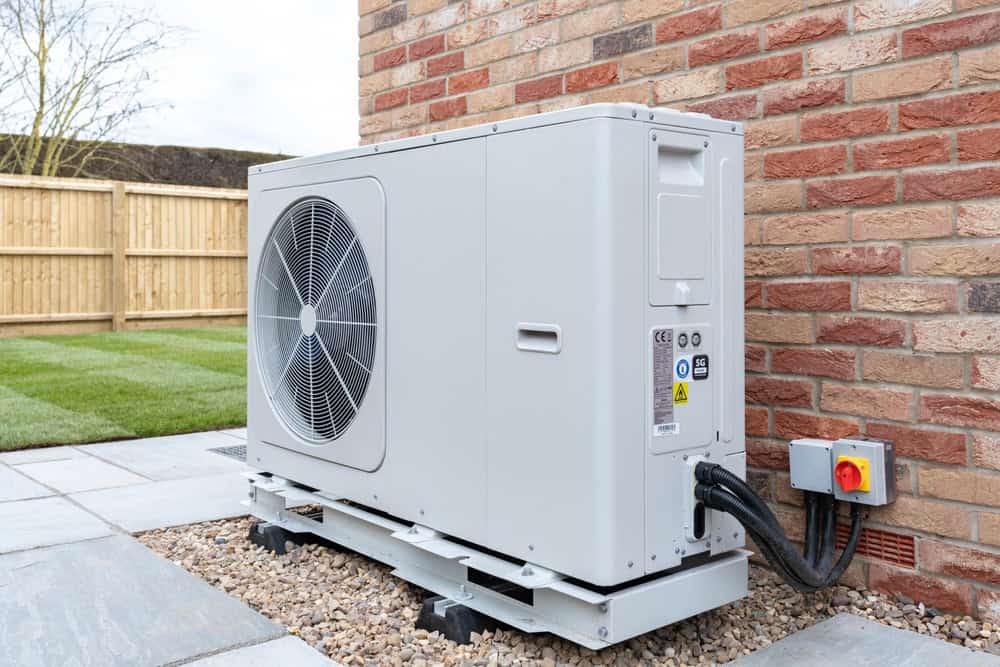
Clean and Change Your Furnace Filter
Did you know a furnace filter regulates your home’s air quality? By changing the filter every other month, you can ensure your home’s indoor air stays clean. Plus, if there’s an issue with the furnace, replacing the filters will prevent it from causing any more damage. A dirty or clogged furnace also makes it harder for your furnace to heat quickly in winter. It takes longer for your heater to kick on and warm the area because it must draw in air before it can heat it. If this happens often enough, you might eventually have to switch out the old furnace entirely with a new one.

Don’t Forget to Check Furnace Operation from Time to Time
During the winter, you’ll most likely be using your furnace more. If you forget to check that it’s running, then your house will start to seriously dry out because all the moisture is being pushed through the vents. This can lead to mold or even a fire hazard. So, try checking on your furnace once a month and make sure it’s running at full capacity. You should also periodically change your filters and have the furnace professionally cleaned. Once in a while, you should also check on your exterior door seals to make sure they’re working properly. If they aren’t, then they can create a lot of draftiness and cold air entering different parts of your home, which can lead to mold or deterioration. Lastly, don’t forget about making sure that you have enough heat in your home to last during the colder months.
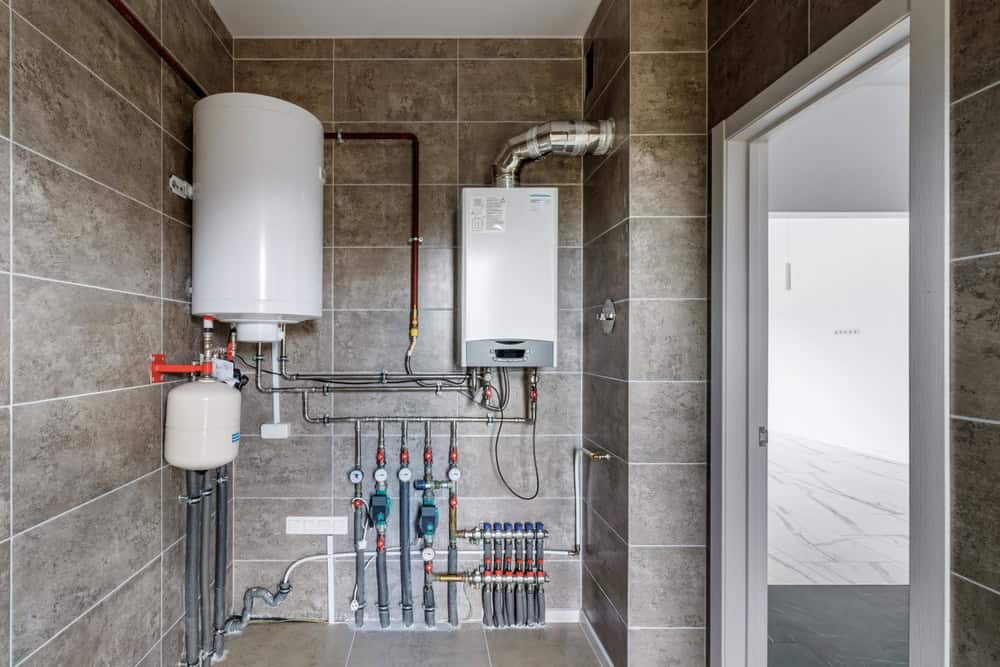
Ensure Water Heater Safety
One of the most important things you can do to ensure the safety of your home is checking on your water heater. If it’s not winterized, then it needs to be winterized. And if it’s not winterized, then it should be replaced. No one knows when their water heater will die or stop working, so there’s no telling how long a water heater will last. Taking proactive maintenance steps will help ensure that your home is safe and protected from any potential problems down the road.

Getting Rid of Dust and Mold
One of the most important steps to take in winterizing your house is getting rid of dust and mold. Dust and mold are both perfect conditions for the growth of bacteria that cause all kinds of health issues, so you’ll want to make sure these elements are eliminated before they start causing any problems. A quick way to do this is by using a vacuum cleaner with a HEPA filter on it to remove any leftover dust particles. Afterward, you can use an oscillating fan to ensure that the air circulating in your home will move quickly around, which will help stop the build-up of dust. It’s also important to keep surfaces free from mold. If you notice some small spots or stains on your drywall or carpet, it might be time to replace them before they become bigger problems.

Stay Dry and Avoid Mold
One of the most important tips to make your home more winter-friendly is to stay dry and avoid mold. When you have a warmer, wetter climate, water easily pools on surfaces like wood and carpet. This can cause problems like mildew and rot in the future. In addition to staying dry, a good air purifier is a must for any home that has been closed up for an extended period of time. Mold prevention starts at the front door with proper insulation or weather stripping. An easy way to keep your door from getting drafty is by hanging a doorstop from the bottom hinge so it can’t swing open when someone walks in or out.

Check Your Exterior for Damage
The first step towards winterizing your home is checking the exterior to see if there are any damages or problems. This includes checking for any leaks, cracks in the foundation, and broken windows. It’s important to take a close look at the exterior because it’s often overlooked by homeowners. Next, you want to make sure your home’s heating system is in good working order. You can test the furnace or boiler by turning on all of the burners and switching them on and off, then doing the same with each individual burner. If you’ve got an old heating unit that needs replacing, this is also a great time to do it. Once you’ve made sure everything is up-to-date on your exterior and heating system, it’s time to get down into your basement or crawlspace to check out any water leaks lurking around the house. Moisture in these areas can lead to mold growth which may require professional help.
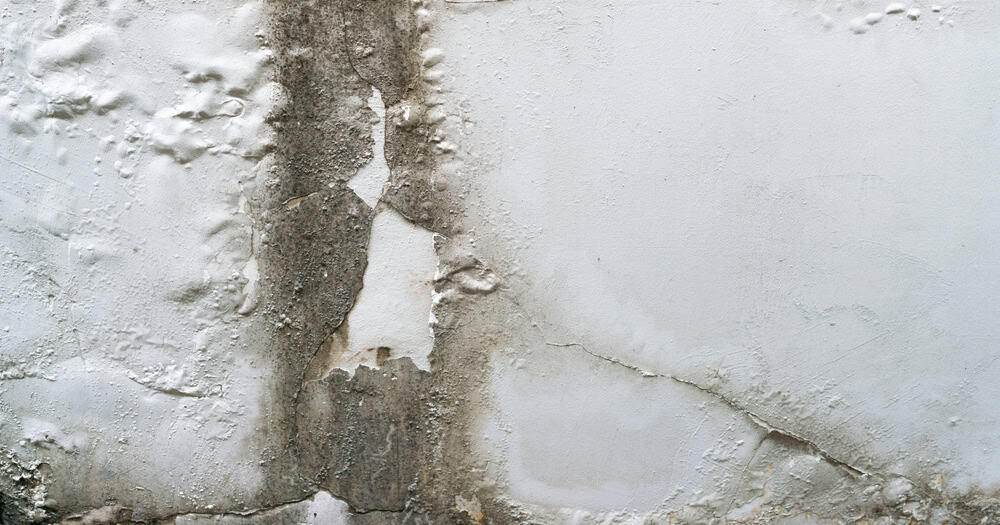
Check Your Roof for Signs of Leaks
One of the most important things to do before winter is check your roof for signs of leaks. If you notice water stains or small rivulets on the ceiling, it’s likely that there is a leak somewhere in the roof and you need to act quickly. You can try caulking and taping any small leaks up, but this will only be temporary. The best thing to do is call a professional contractor who can take care of sealing up potential holes in your roof. A lot of people neglect their gutters during the winter months because they don’t see how they are helpful with rain collecting in them. This can cause big problems like clogged drains and plumbing issues down the road when it starts raining hard again. Gutters are also important because they keep snow out of your attic so you don’t have to worry about ice dams or any damage caused by melting snow on your roof.

Check Your Foundation for Damage
The foundation is an often overlooked area of your house. Research has shown that the foundation can be responsible for structural damage, leaks, and even the spread of diseases in your home, so take some time to examine it. If you don’t know where your foundation starts and ends or how to assess any damages, there are a few ways to find out. You can use a ladder or a drone to view the property from above. Also, if you have an old photo of your property from before construction began, you can also use that as a reference—just make sure it was taken after the foundation was completed or before major renovations occurred. This will help you see if anything has changed since then.
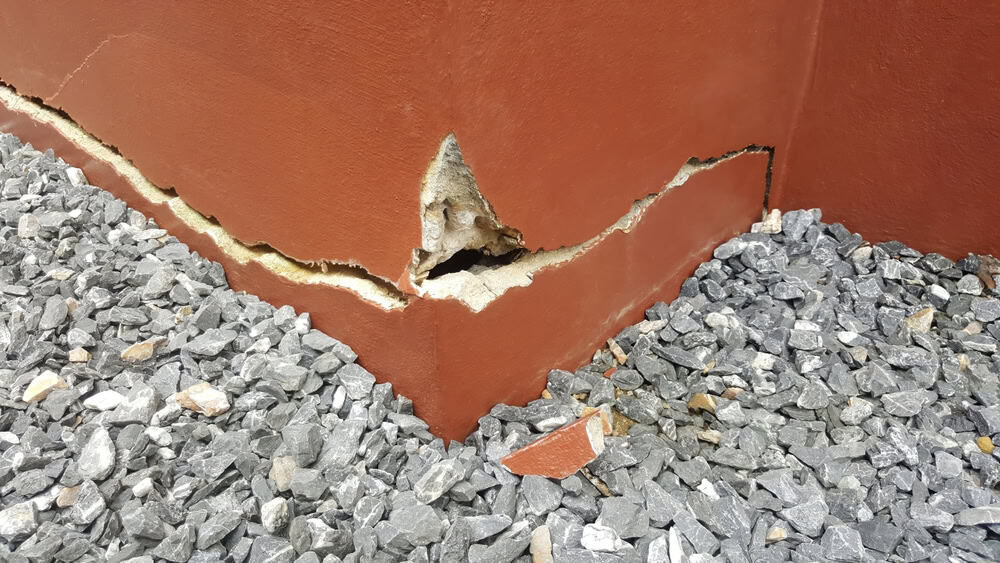
Install Outdoor Faucet Covers
If you’re looking for a quick, easy fix for winterizing your home, installing outdoor faucet covers is a good place to start. These covers are made of water-resistant material that will keep out any potential water damage from the weather. Plus, they’re inexpensive and easy to install! Another thing you can do is to invest in regular cleanings with your vacuum cleaner. This is also a quick and easy way to improve indoor air quality, which will be helpful when it comes to fighting allergies or asthma.
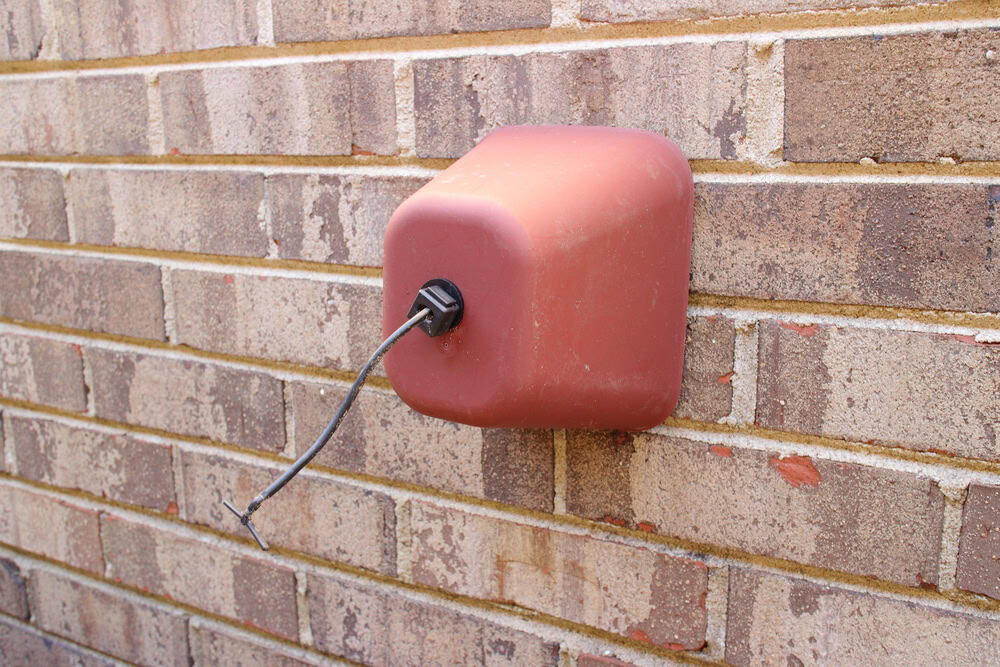
Other Winterization Tips to Consider
1. Keep water out of your basement: One of the most basic steps in winterizing your home is keeping water out of your basement. This can be done by using a drain board, installing a sump pump, or using special drains for outside and inside.
2. Get rid of excess energy loss: Now that its cold outside, its time to focus on getting rid of excess energy loss in your home. This can be done by sealing windows and doors, insulating walls and attic spaces, or using a programmable thermostat.
3. Protect your pipes: Frozen pipes can lead to costly repairs, so its important to take steps to protect them. This can be done by insulating exposed pipes, letting faucets drip during cold weather, and keeping the heat on in your home (set to at least 55 degrees).
4. Prepare your fireplace: If you have a fireplace, now is the time to have it inspected and cleaned. This will help prevent fires and ensure that it is ready for use when the cold weather hits.
5. Remove leaves and debris: Fall leaves can clog gutters and downspouts, so its important to remove them before the first snowfall. Debris can also build up on roofs, gables, and chimneys, creating a safety hazard.
6. Check your batteries: Before the cold weather hits, it is important to check your batteries in your smoke and security alarms. Not only will this help ensure that they work during the winter, but it will also prevent any false alarms from happening during this time of year.
7. Prepare your vehicle: If you need to leave town for a while during the winter, be sure to prepare your vehicle by putting chains on tires, filling up your gas tank, and locking your car doors.
8. Check for leaks: Water can seep into walls and ceilings where there are gaps or seams in the roof or walls. Check these areas for signs of water infiltration and take necessary precautions to protect your home.
9. Get a home warranty: A home warranty can help cover some of the costs associated with winterizing your home. This can include things like broken water pipes, frozen pipes, and basement flooding.
10. Get a professional: If you’re not comfortable doing any of the tasks mentioned above, then you should get a professional to do them for you. There are many reputable companies that offer this service and they will be able to help you take all the necessary precautions to protect your home from potential problems in the coming months
5 Tips For Choosing A Residential Home Inspection Company 23 Nov 2022, 8:39 pm
What to Look for in a
Residential Home Inspection Company
Whether you’re buying your first home or your tenth, a residential home inspection is an investment. When you’re spending hundreds of dollars on an inspection and contracting company, it’s important to choose the right company.
If you’re buying a house for the first time or investing in a fixer upper, your instincts are probably telling you to do extra research and check the house out more thoroughly before making any final decisions. But what does that look like? How can you tell if the company you’re considering is trustworthy? What questions should you ask during an inspection? Choose your inspection company carefully so that they meet your needs as their main concern — getting repeat business from happy customers who will recommend them to other potential clients.
A home inspection can be a very stressful process, but it’s also an important one. Whether you’re buying a house or repairing an old one, you want to know what the options are and whether they’ll be worth your while. The first step is deciding whether you want to hire a professional or do-it-yourself. It might seem like hiring someone will be more expensive, but it won’t always be. Online estimates from companies that offer multiple inspection types can give you a good idea of what you should expect to pay for a residential home inspection.
When choosing an inspector for your property, look for:
– References that show the company has been in business for some time
– A website with lots of reviews from previous clients
– A contact number and email address so you can ask questions during the inspection process

Consistent Coverage of Services
One of the best ways to find out if a company is credible is to ask them what they specialize in. If they don’t provide a list of their services on their website, take a look at their portfolio or ask them what areas of home inspection they cover.
Different types of inspections can vary drastically in cost and should be considered carefully before choosing an inspection company. You want to choose someone who offers you the coverage you need for your investment — whether it’s determining the quality of construction, checking for pest infestations, evaluating water quality, conducting radon testing, or setting up security systems.
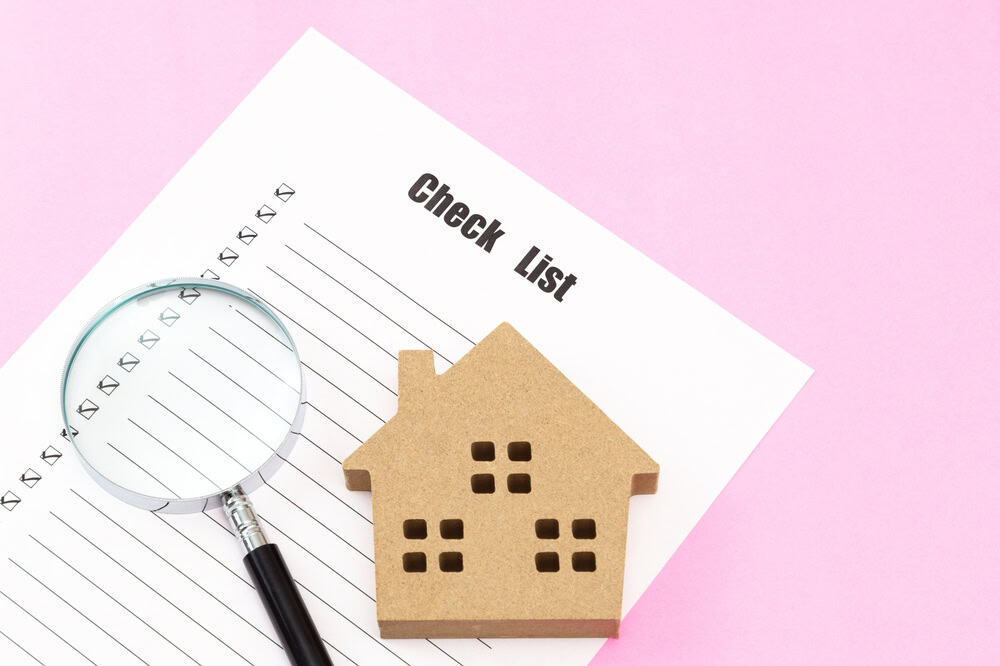
Written Contracts and Pricing Information
Always negotiate a written contract with your home inspection company. You should be able to see the specifics of what they’ll do and how much it will cost.Many home inspectors also offer discounts for signing up for annual service plans. They usually have a variety of plans, including packages that suit different budgets. The best way to avoid being cheated is to ask what the price per hour is for every task you expect them to complete on your behalf.
Be sure to get at least three bids before choosing your home inspection company, as well as a list of references from satisfied customers who can vouch for their workmanship and reliability.

Feedback and Reviews
One of the best ways to get an idea about a company is to read past customer reviews. You’ll want to look for specific feedback about their work and how it performed. If potential buyers are happy, be sure that you are too!
Before choosing a company, it’s important to think about what you need from them. What kind of things should they be able to do? What kind of questions should they be able to answer? Are there certain types of projects that they specialize in? There are a lot of factors that come into play when choosing an inspector and you should make sure to ask for more information about what the company does before making any commitments.

References and Testimonials
References and testimonials are a great source of information to help you decide which company will provide the best service for your needs. Online reviews can give you an idea of what other people think about the company and its quality of work, but there are many additional sources like referrals from friends or family, who the company has done work for in the past. And if you’re not sure who to ask, it’s always worth reaching out to former clients to see what they thought about their experience.
If you need to find a home inspection company that meets your specific needs, do some research and compare their services with other options on the market. The right company will have service plans tailored to your needs so go with one that has a plan that fits your requirements.

Wrap Up
- Treat your home like a business.
- Do not be afraid to ask questions.
- Choose your inspection company carefully.
